American Samoa has not really felt much like a tropical paradise. Since we’ve gotten here we’ve had almost nothing but high winds and rain. We are soooo over it at this point. Every dinghy ride to the town dock ends with salt-spray soaked clothes. This particular storm got frisky enough for us to flip on the wind instrument. I saw it hit as high as 43 knots right before I snapped a pic.
At one point the government installed five moorings around the bay. I doubt they realized at the time that they would just end up with five of these tied up to them indefinitely.
With potential good weather on the horizon we started loading up the boat. I will say that shopping here was very similar to shopping in the States. Folgers coffee (I know, I know), Idaho potatoes, hard taco shells (very rare), etc..
Still windy, but more blue than we’d seen in a while.
About five days earlier I noticed that the waterline on the white boat in the bay was dropping. Throughout the week we constantly saw people standing on the dock staring at the boat. I assumed they were deciding what to do with it.
Then this day we came in found it at this level. We said, “That thing won’t make it through the day.”
We took a drive out to see what sea conditions were like. The forecast looked good a few days from now, but it was clear the waves were just going to continue to build right up until then.
As we were sitting here enjoying the view a man drove up and wagged his finger “no” at us. He informed us the village was closed. It was Sunday. Nobody is supposed to be doing anything other than sit in a church, apparently. Nobody.
So we left and drove around feeding dogs. When Ali started talking to this one its tail started wagging so much she was slapping both sides of her body with it. Ali just likes them to get one big meal in so they can go rest and take the rest of the day off from worrying about food. Sort of a dog Sabbath.
We got back just in time to watch the boat breathe its last breath. Seconds later it was on the bottom.
The next morning we woke up to find the derelict Barbarella (a 1962 72-foot steel hulled yacht) had sunk. It had been tied up to the barge. Hundreds of miscellaneous pieces of garbage would float past our boat, along with a wide slick of diesel and oil. The mismanagement and filth of Pago Pago harbor is unmatched.
I thought it was impressive that I could catch two fresh sunken boats in one picture. Port Control seemed uninterested. The response over the VHF when someone called in to tell them the Barbarella had sunk was actually no response at all. Surprisingly, they got a crane out to pull the sunken boat in the marina out of the water. It took two days. I was up at the dock as they were trying to get it out and I said to one of the guys who was up there working on it, “Probably would have been easier to pull it out before it sunk, huh?” He laughed and said, “We only do things the hard way.”
Because I just talked about boat buying in our last post, I’ll add another thought.
Number one boat buying rule—buy a boat you can afford to lose.
Does that mean that it won’t completely suck if your boat sinks? No. Losing this boat would definitely hurt. But would it change our lives? Not really.
I constantly hear from people who are buying boats, and it seems like every one of them is overextending. They might have $300,000 cash to spend, but they think that instead of a used catamaran they could pay cash for, they are entitled to a new catamaran that cost $1.2 million. They eagerly sign on the dotted line at the bank for an expensive loan, so that they can pay heavy interest on their depreciating asset. Makes no sense. On top of that, once you’ve borrowed money to buy a boat you are beholden not just to a bank but to an insurance company. You can’t go anywhere unless the insurance company gives you permission. Insurance is another large expense.
We’ve never had insurance (other than an occasional inexpensive liability-only policy if a particular marina/haul out required us to have it). That choice has saved us around $80,000 in premiums over the years, and probably closer to $200,000 if you take into account the opportunity cost of that money. That’s just the insurance, to say nothing of the interest expense of a boat loan. In other words, the money we’ve saved (and then invested) by buying boats that we can afford not to insure has likely paid for the majority of our current boat.
I met a guy here the other day who was going to be sailing directly from here to New Zealand, not because it’s where he wanted to go next, but because his insurance required him to be there by a certain time. On top of that, because his boat was a 2013 he is also required to replace all his standing rigging. Some sort of insurance ten-year rule. He could have an experienced rigger take a look at the boat and determine his rigging was still in perfect condition, and it wouldn’t matter. He’d still have to tell the rigger to tear it all down and put new stuff on. I have no idea how much that will cost him, but I imagine it’s somewhere north of $20,000.
Anyway, enjoy this photo of Bumfuzzle in a diesel slick.
Ali likes to tease me for always walking around with a headlamp on. I tell her I’d be happy to install lights in every cabinet, bilge, and engine compartment instead.
Boat is a disaster as we finish up a couple of projects, get organized, and prepare to leave.
A hanging closet is worthless space to us. We don’t hang up t-shirts and board shorts. You all know how much Ali enjoys organizing, so you can imagine how surprising it is that she put up with a closet that looked like this for the past year.
Not going to win any wood-working awards, but still a huge improvement.
The pantry cabinets were equally useless. Each of these had one shelf planted in the middle. We doubled or tripled the usable space on these with a couple of shelves.
We’ve tried to avoid using the watermaker in Pago Pago, which has meant daily runs to fill up with the water at the fuel dock. Nobody got sick. And yes, that solar panel light pole blew down one day this week. I dragged it off the dock up to where it is here. Literally everything about Pago Pago feels like it is decaying.
And… we’re off. And wouldn’t you know it, our departure perfectly coincided with the first cruise ship to visit American Samoa since the pandemic. Our paths crossed so close that the cruise ship captain called me on the VHF to declare my intention. He wasn’t thrilled with how close we were. My intention was simply to hold my course and then turn hard to starboard after he’d passed.
I’d asked a guy at Customs the day before what the tourists from the cruise ship would do, because honestly this hardly seems like a typical cruise ship type port. He said they were mostly older Germans and they loved to hike, so most of them would get shuttled up to the National Park, walk around a bit, comment on how green everything is, and be gone again before the sun set.
Our first day out the seas were still pretty big even though the winds had dropped down to about fifteen knots. But by day two of the passage to Tonga, the wind had died and the seas had gone flat. I took this as my opportunity to jump in the water and scrape the bottom of the boat. The Pago Pago stop had been ruinous on the condition of the boat’s hulls. Barnacles were growing thick, as was a carpet of muck (not grass, just some sort of thick goo), which was slowing us down.
When I told the kids I was going in to clean the boat they jumped. “Seriously? Can we come?”
So, here we are, in the midst of the Tongan Trench, with close to 30,000 feet of water beneath us. The Tongan Trench holds the second deepest spot in the world.
They waited when I had first gotten in so that I could scrape the boat off. Within just a couple of minutes of getting in Ali, who was standing up on the bow, yelled, “There’s a turtle swimming right at you.” I turned around and watched as he swam straight towards me. It seemed clear that he had seen us and come to investigate. He swam straight until he was just a couple of feet in front of me and then veered off and slowly swam away. The ocean is awesome.
In addition to swimming in the Tongan Trench, we were also crossing the International Date Line about the same time. As if our time zone wasn’t confusing enough (most of our important time related stuff is tied to the stock market’s opening hours), we are now a day ahead of the U.S., having lost an entire day somewhere in this vast blue Pacific Ocean.
Winds slowly filled in throughout the day.
Full moon on night two of a three-night passage to Vava’u, Tonga. Day three brought twenty-knot winds just about on the nose, which wasn’t much fun. We were anxious to get in before they built any further (as they were forecast to do), so we motorsailed the last twenty-four hours keeping the wind about 30 degrees off the nose. The last night was a little rough, but by morning we were in the lee of the islands for a smooth entry to Tonga.

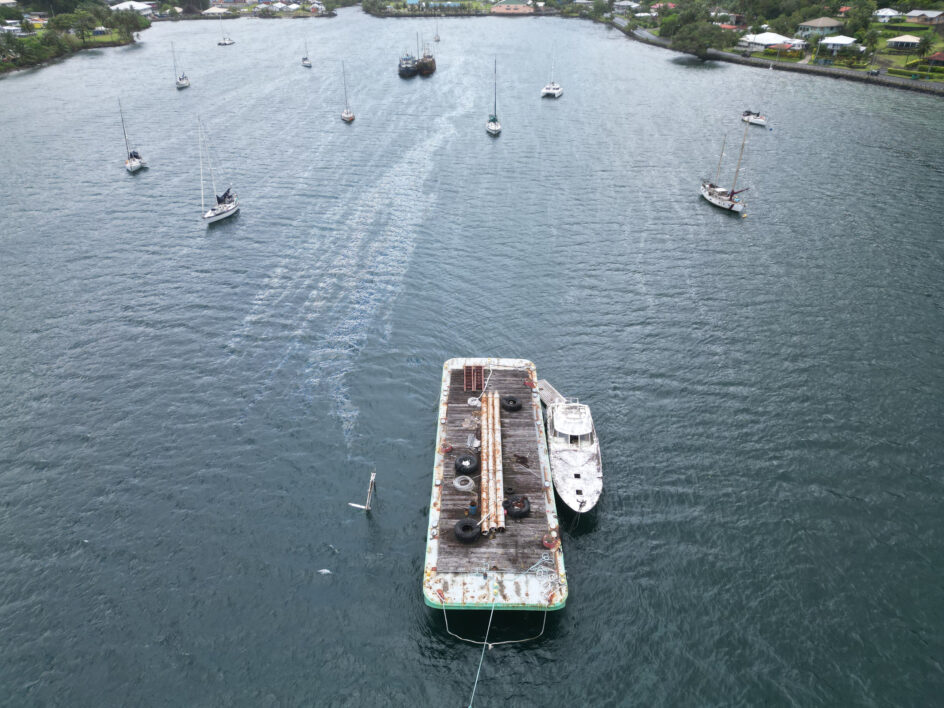
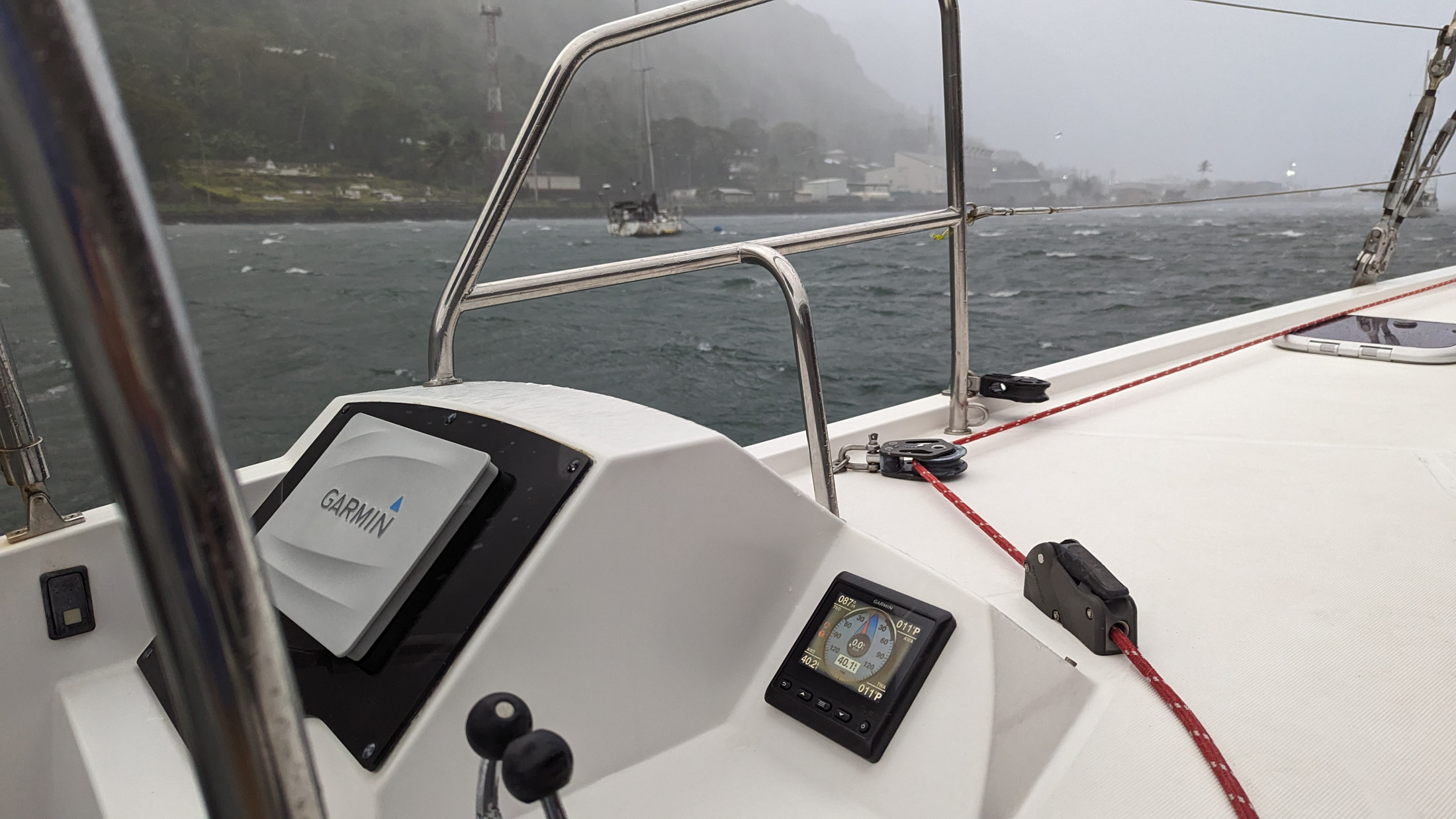
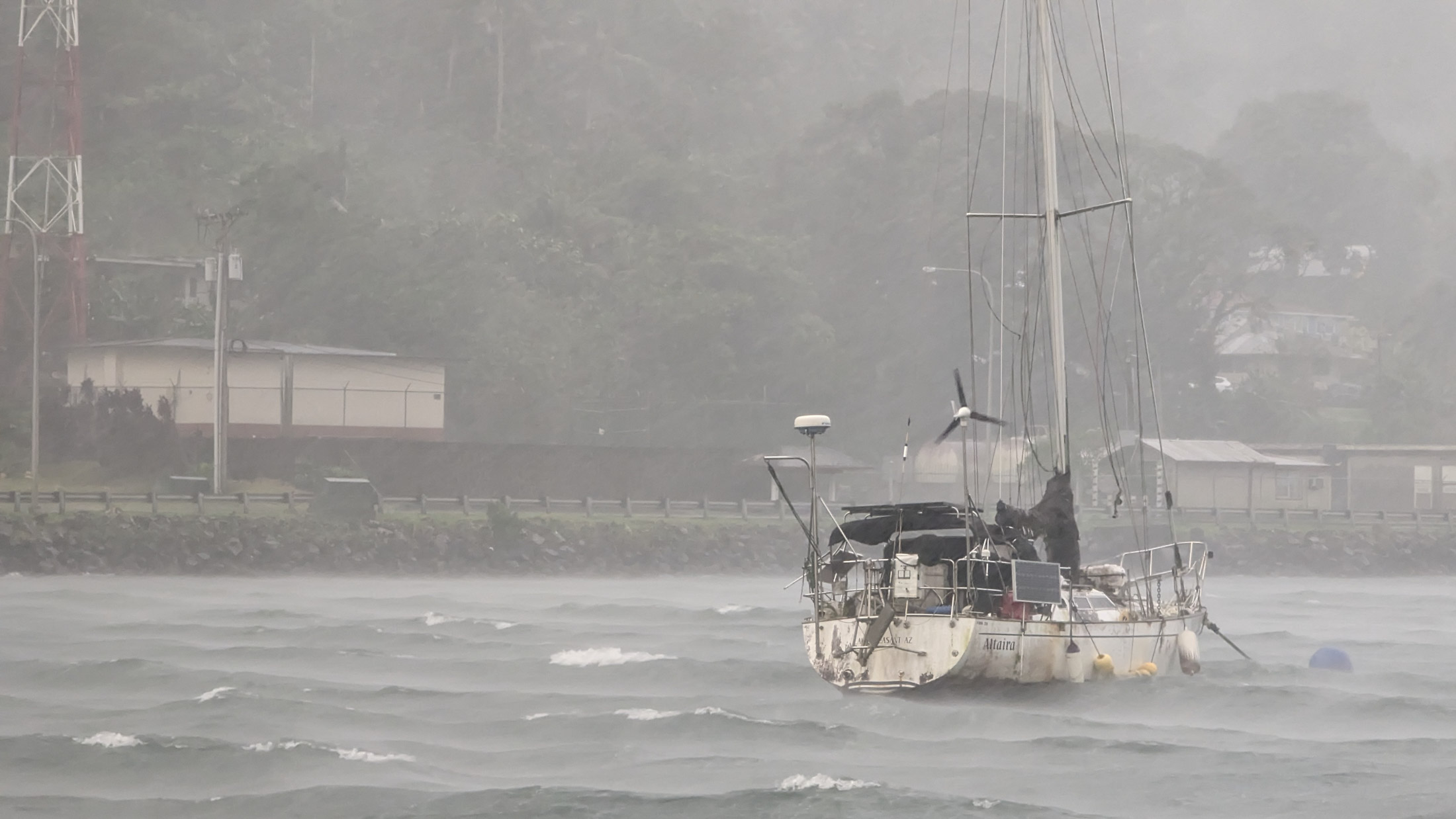
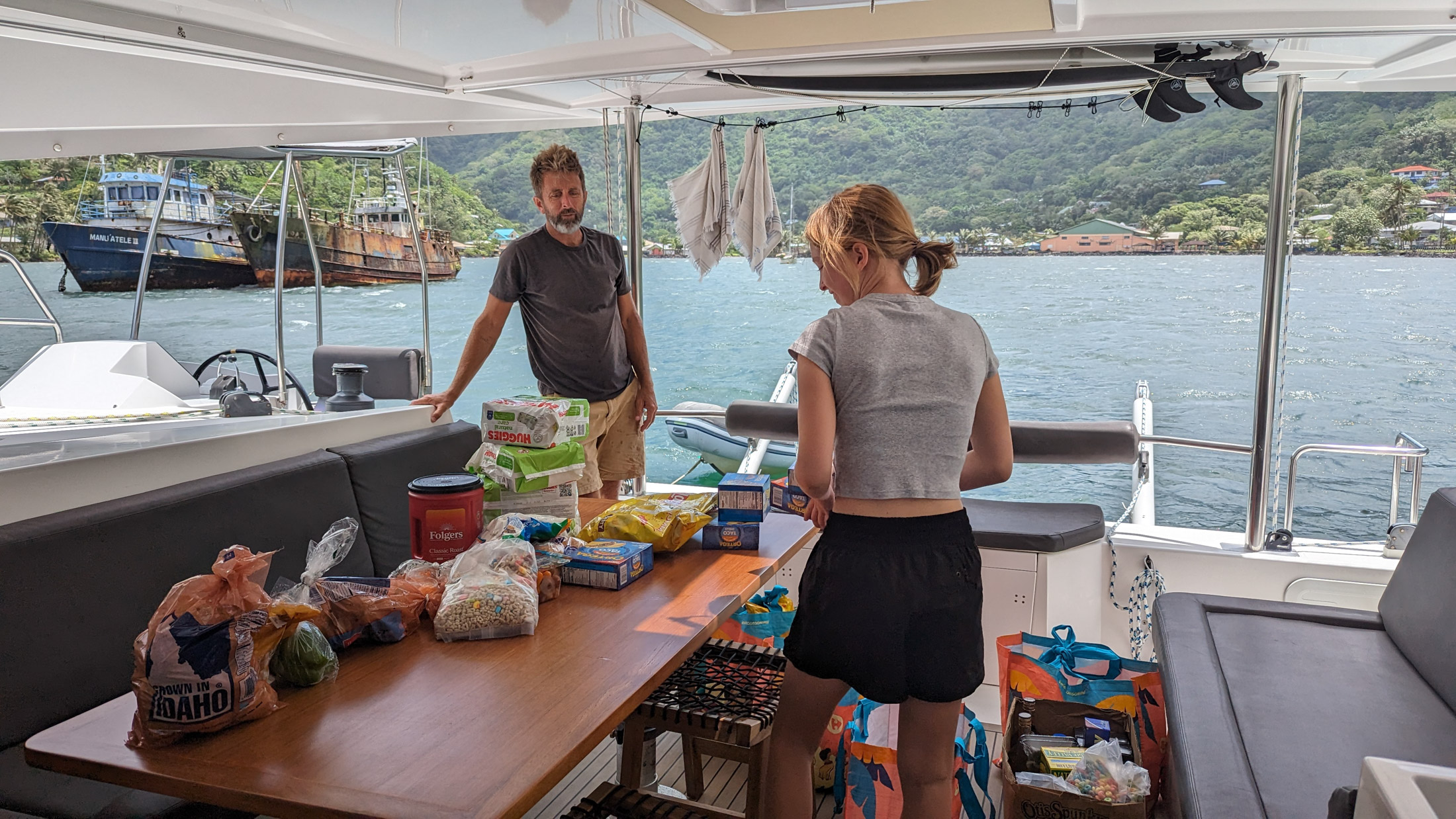
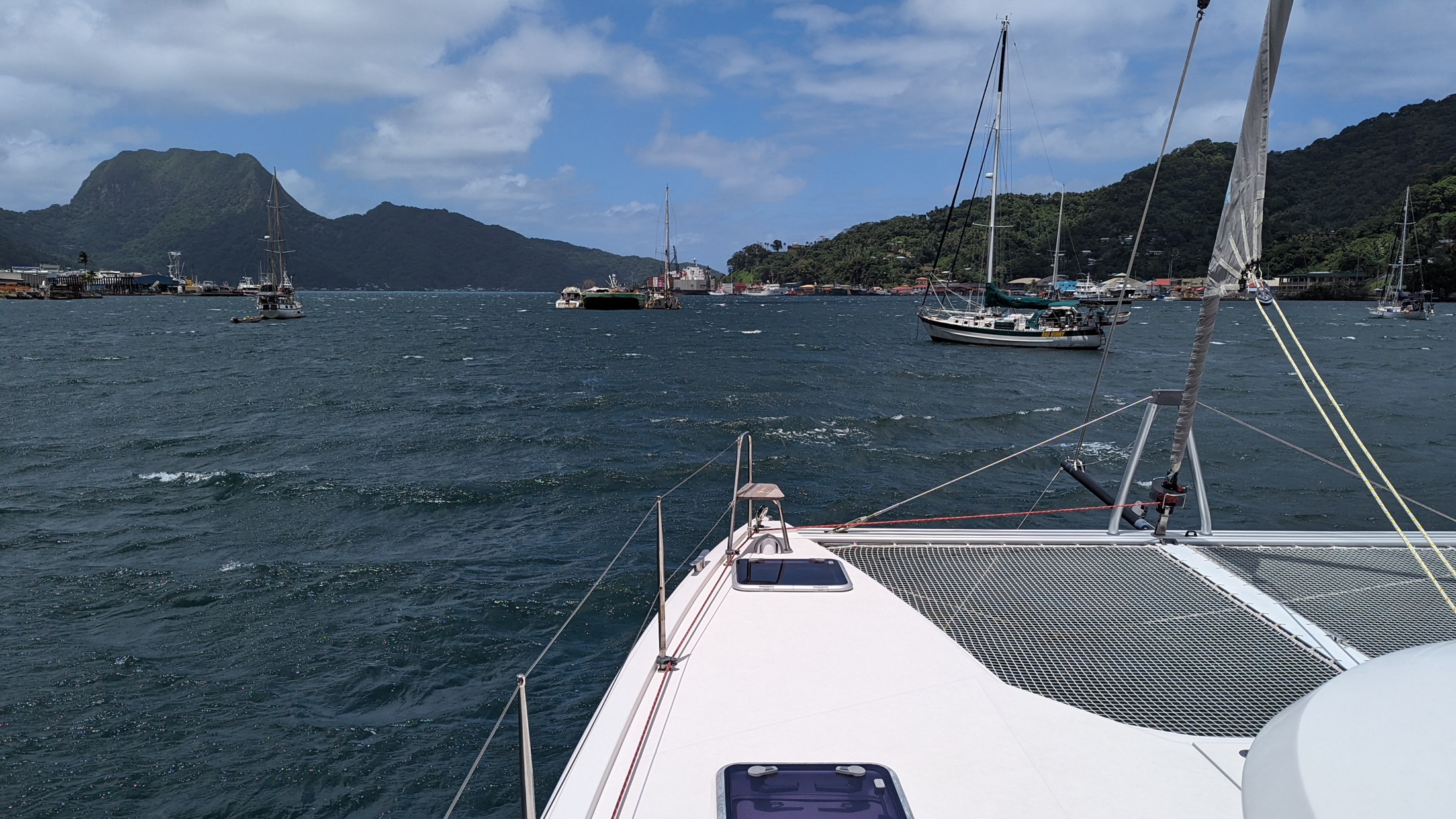
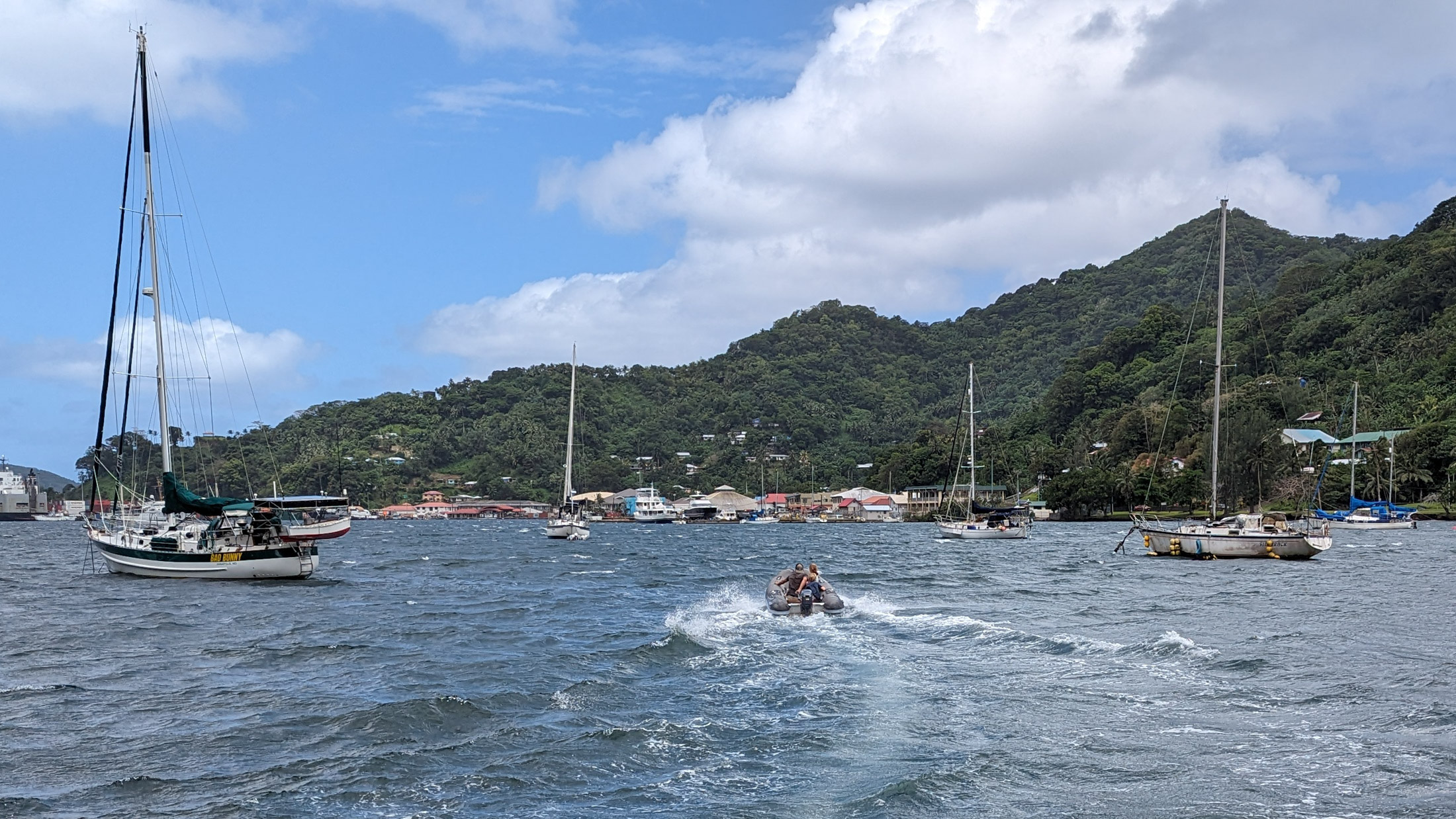
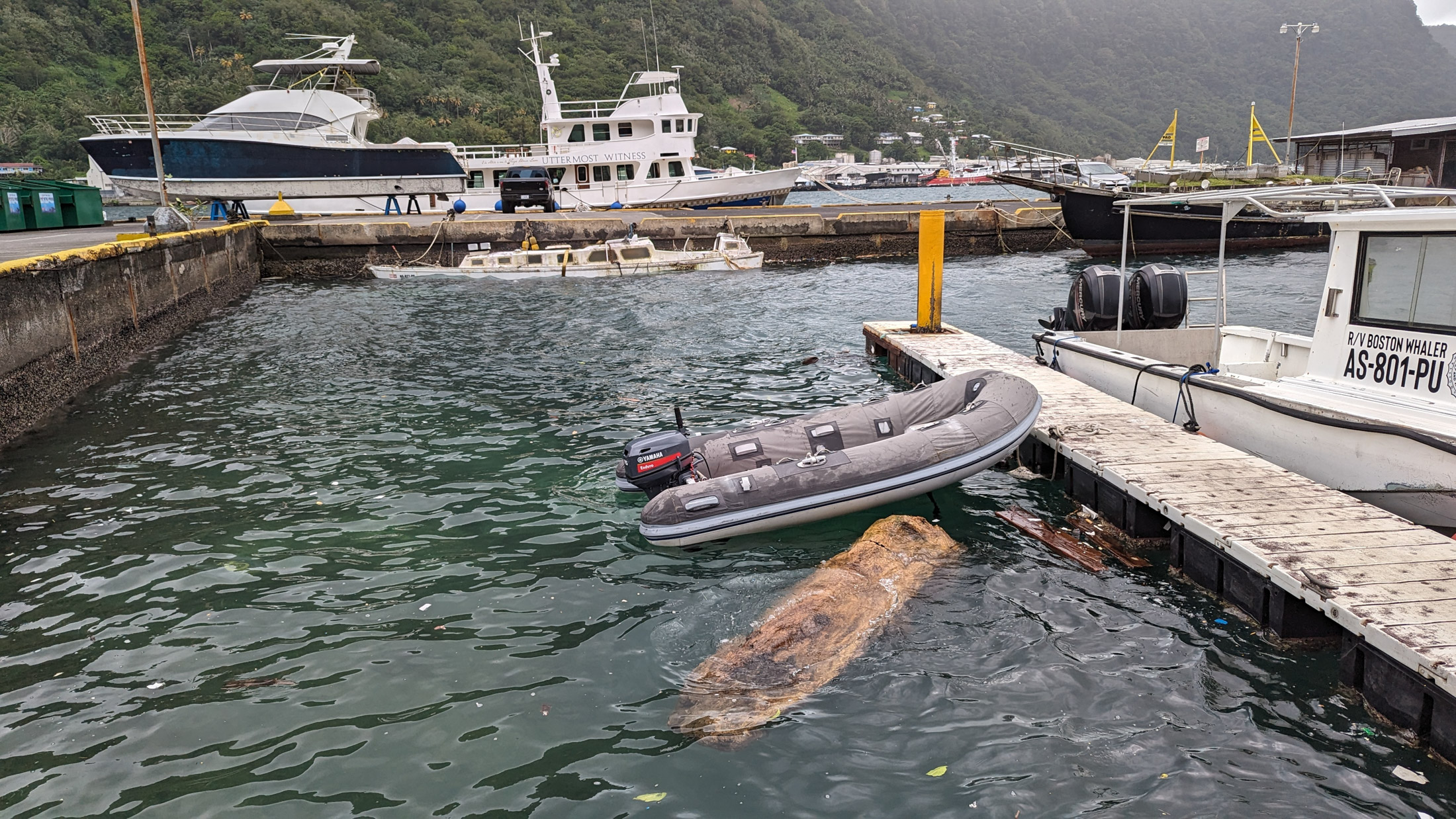
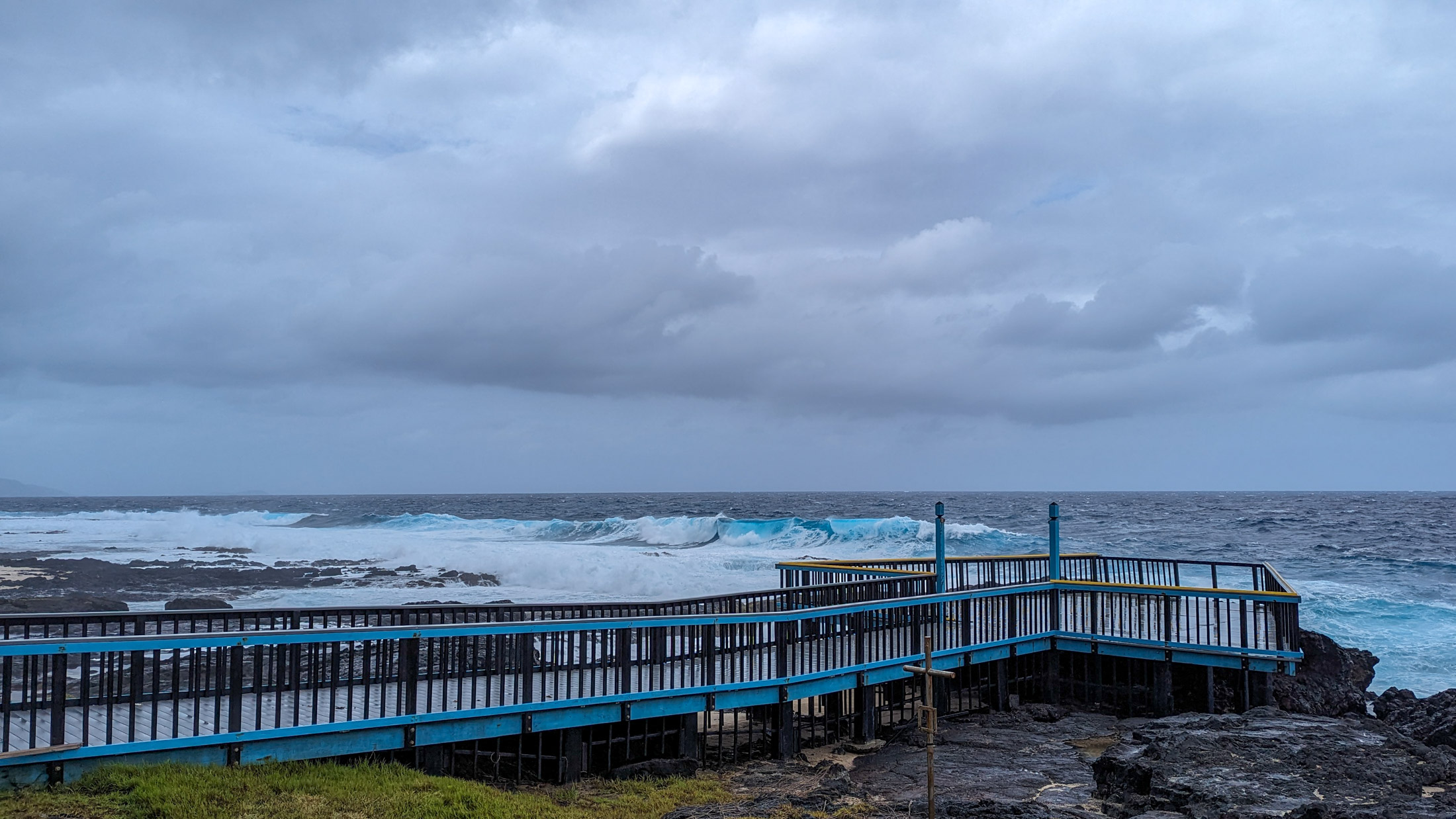
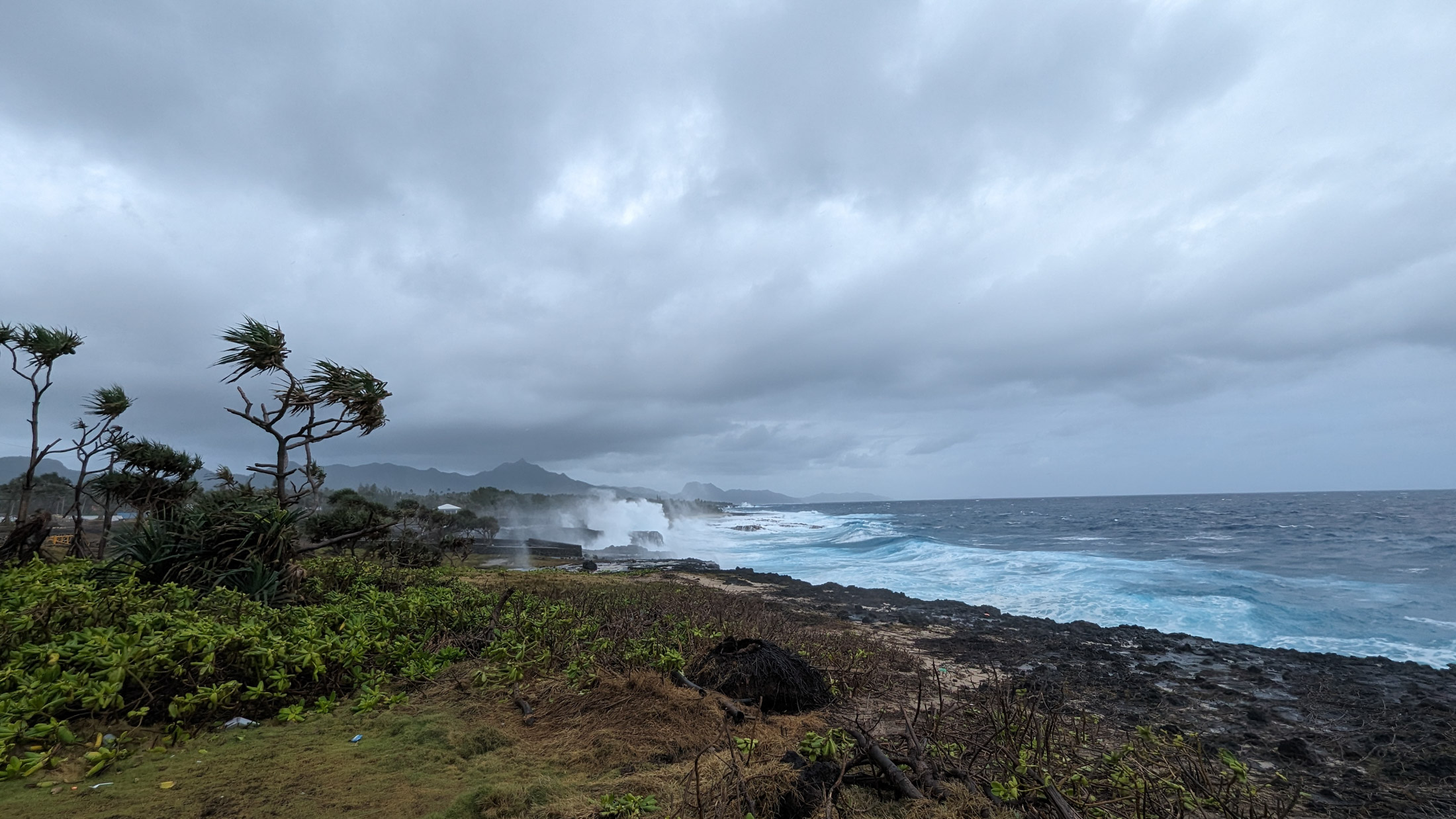
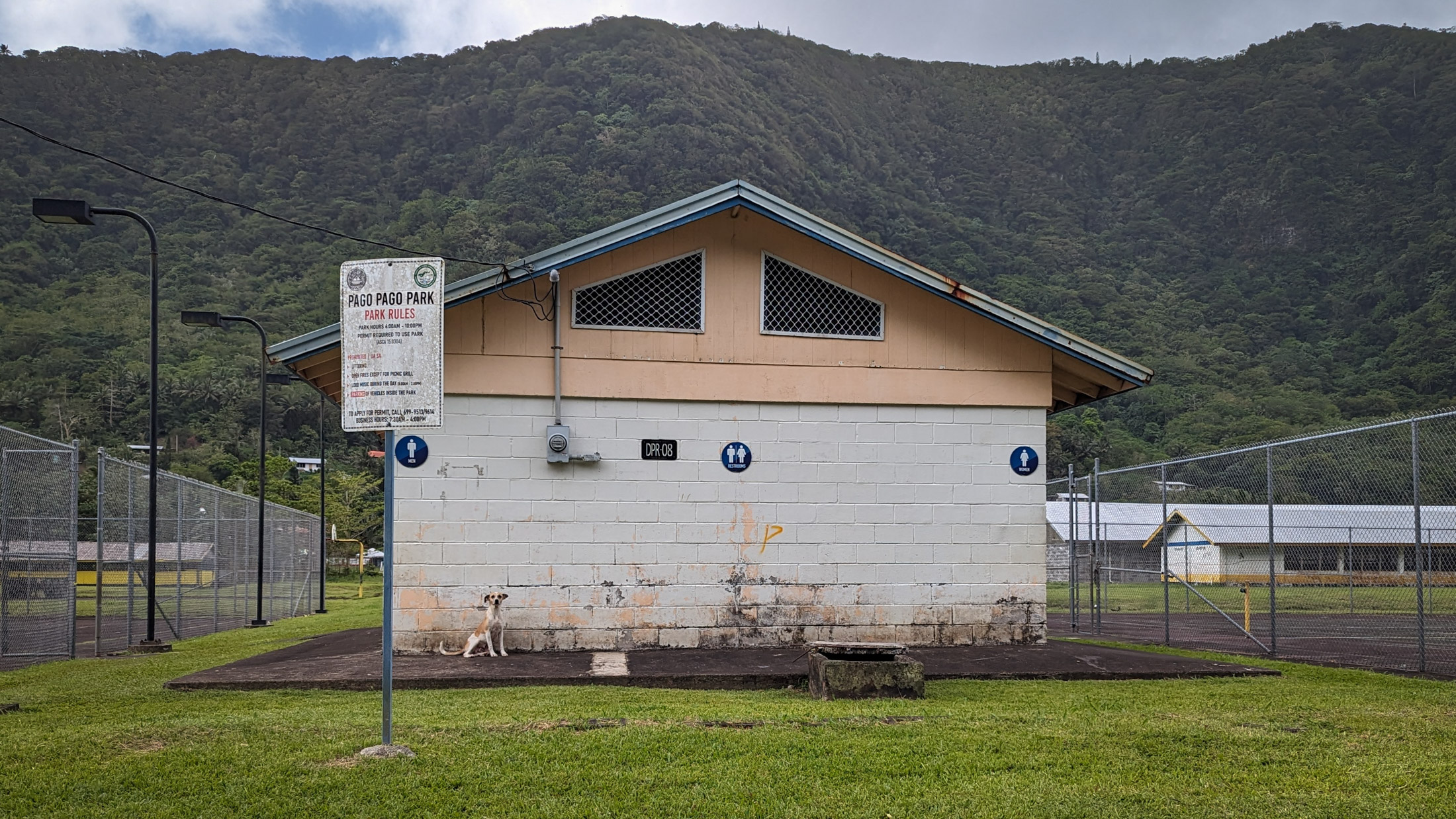
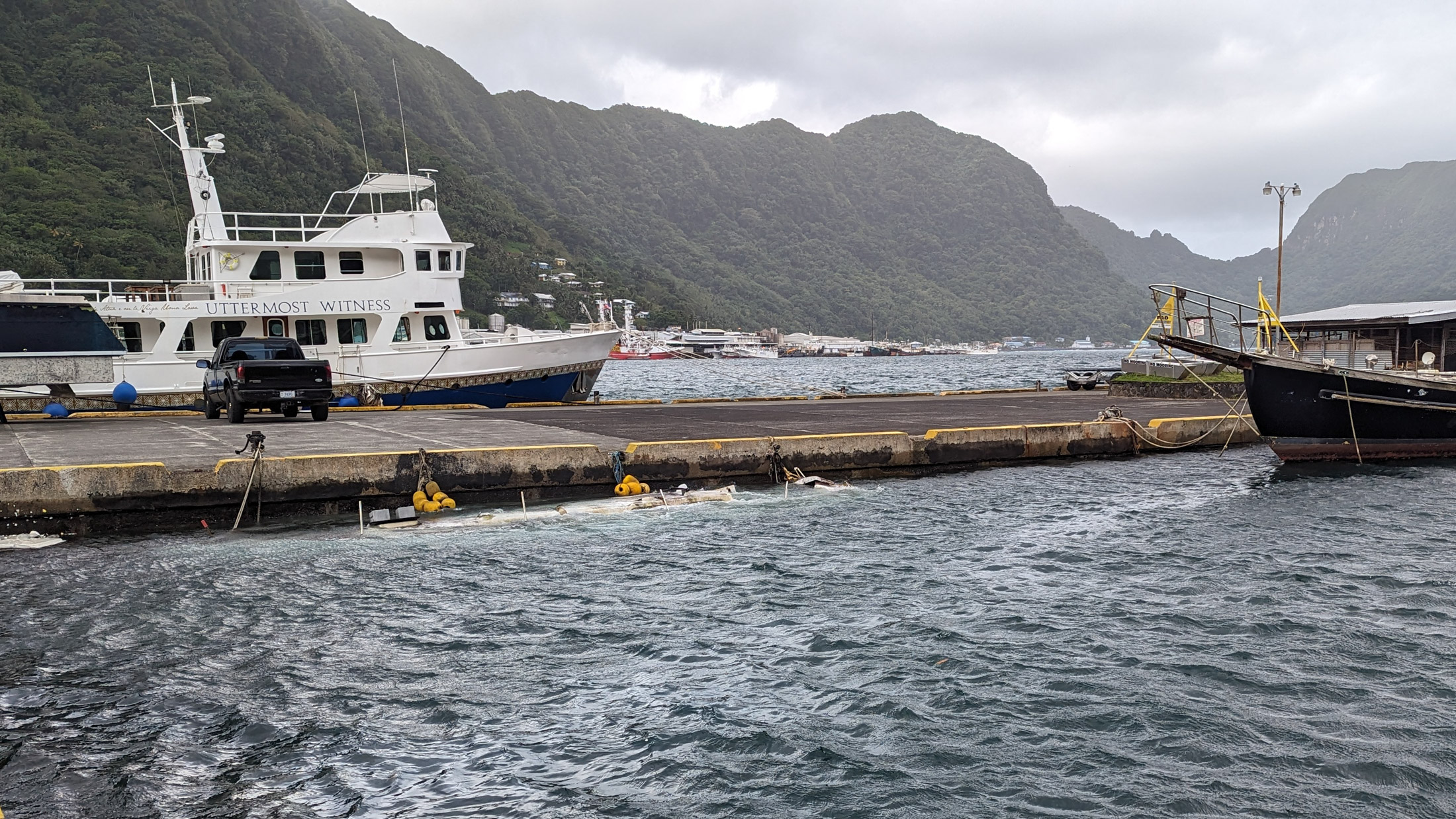
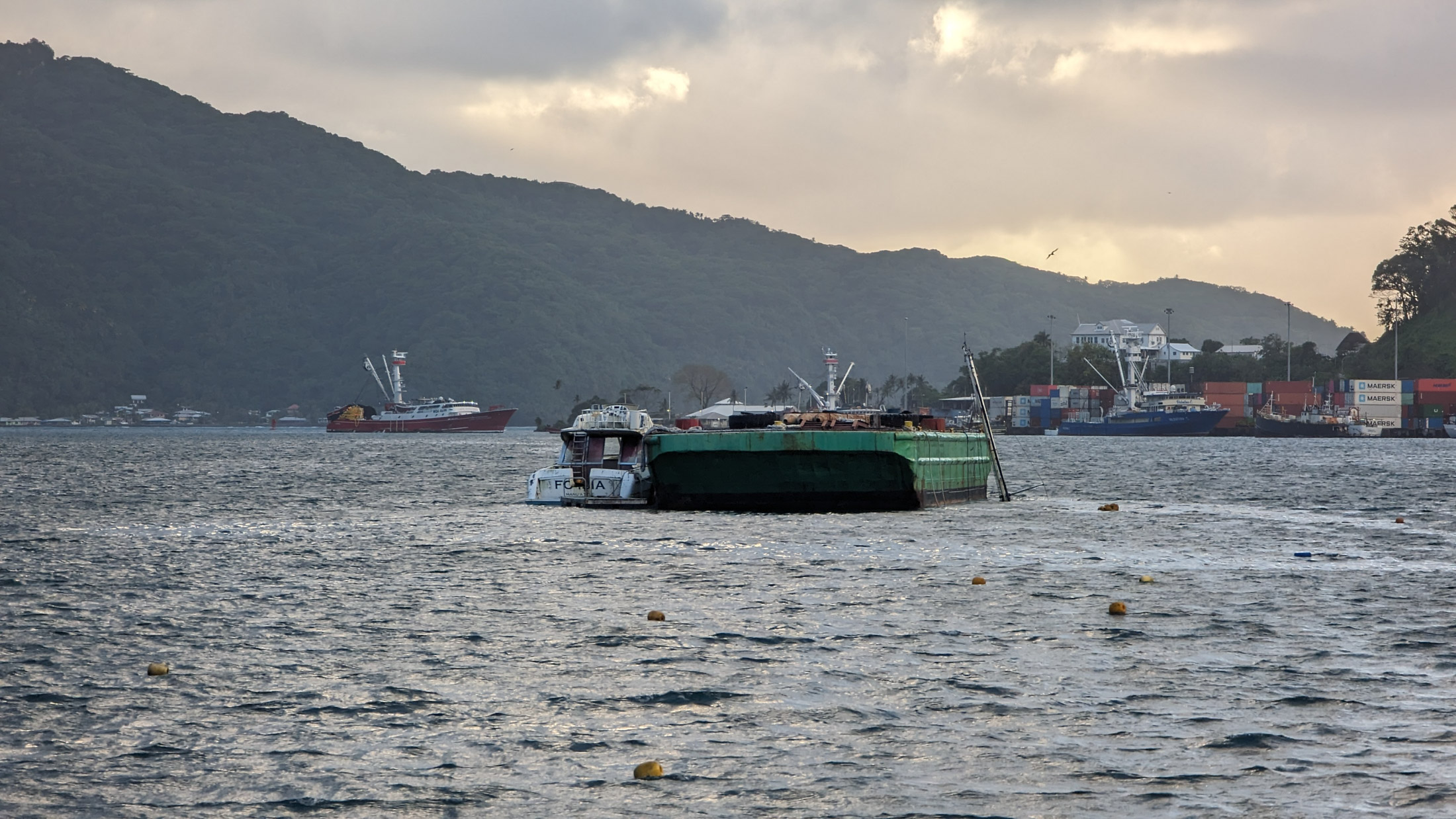
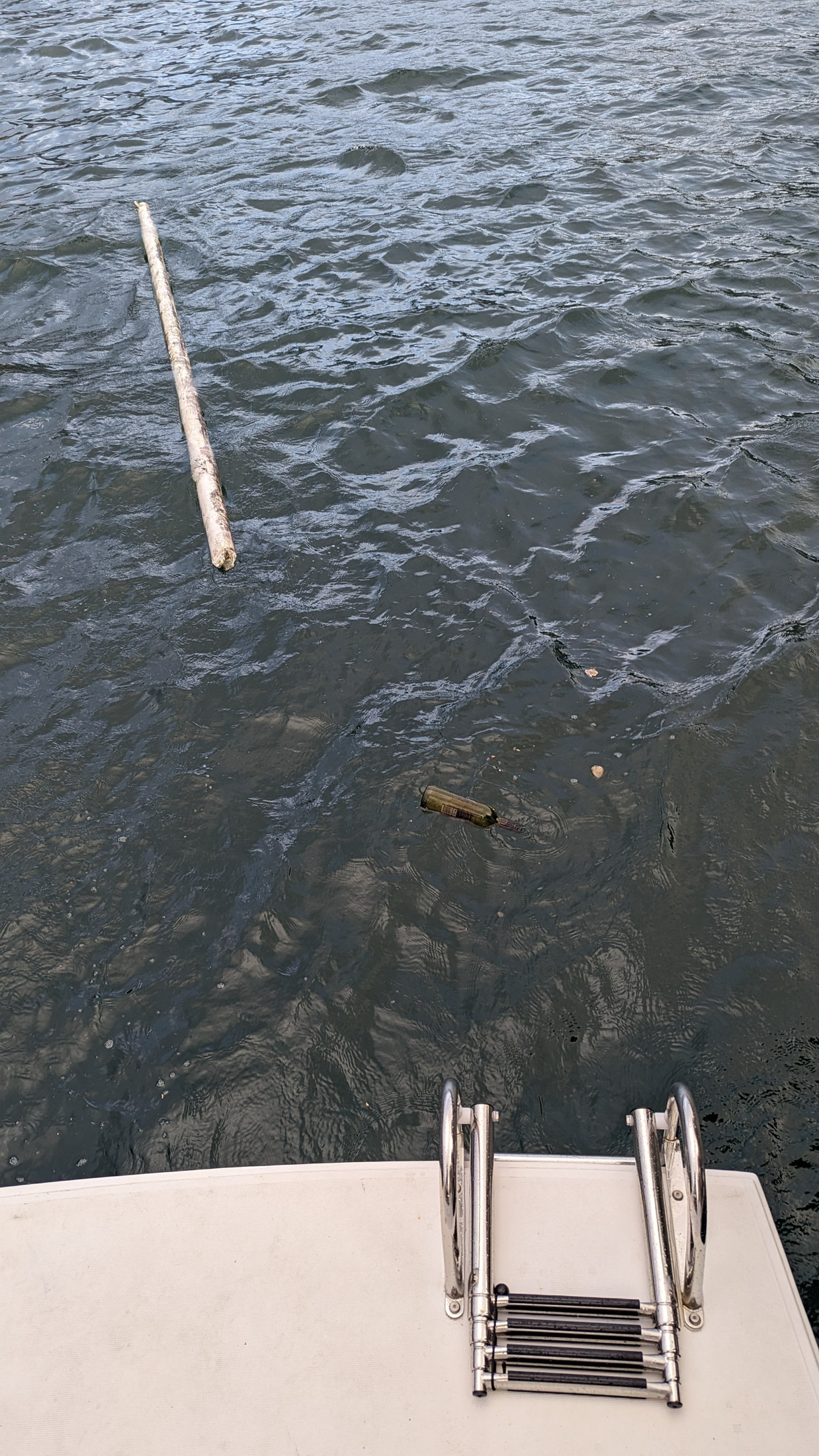
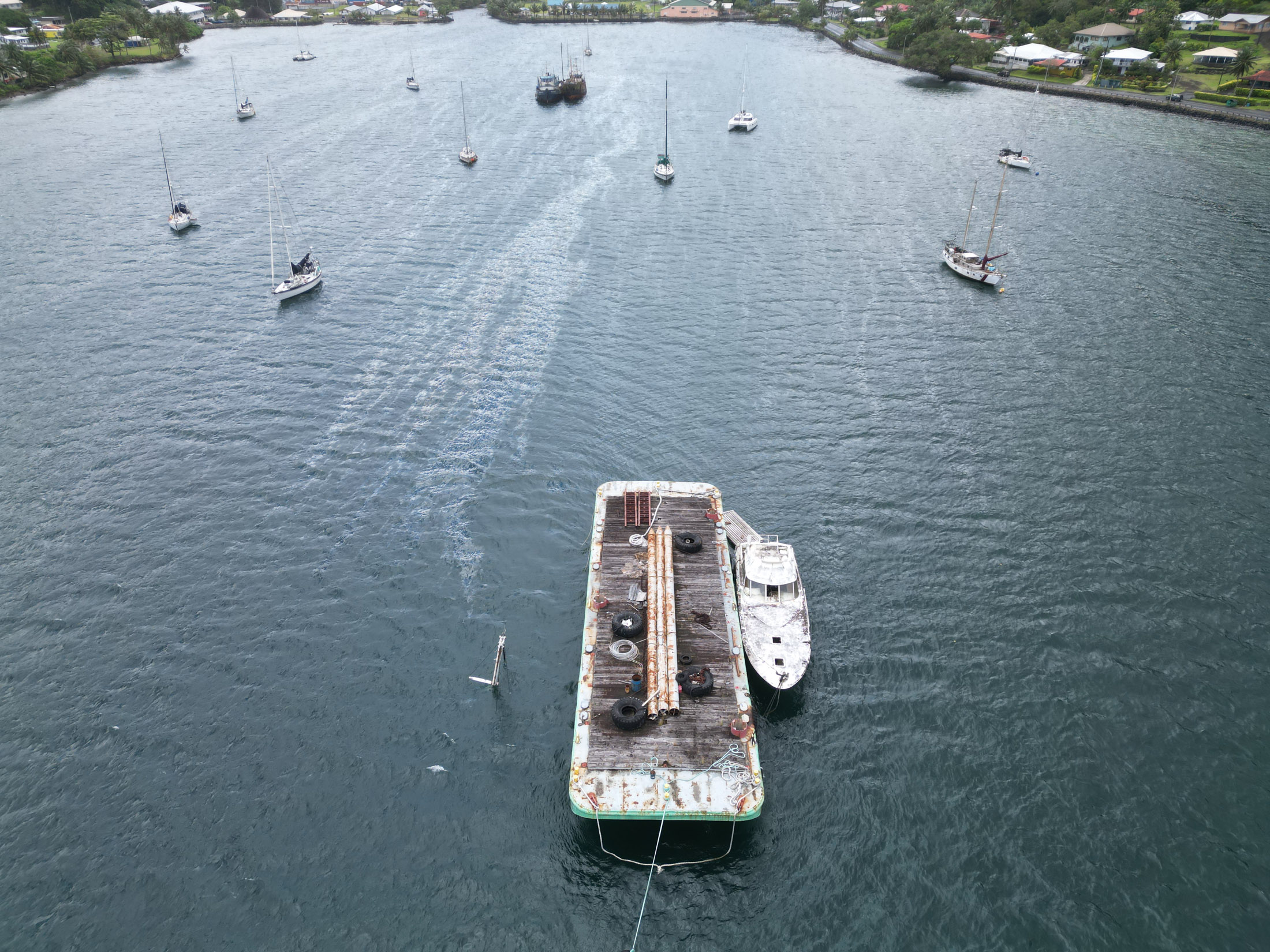
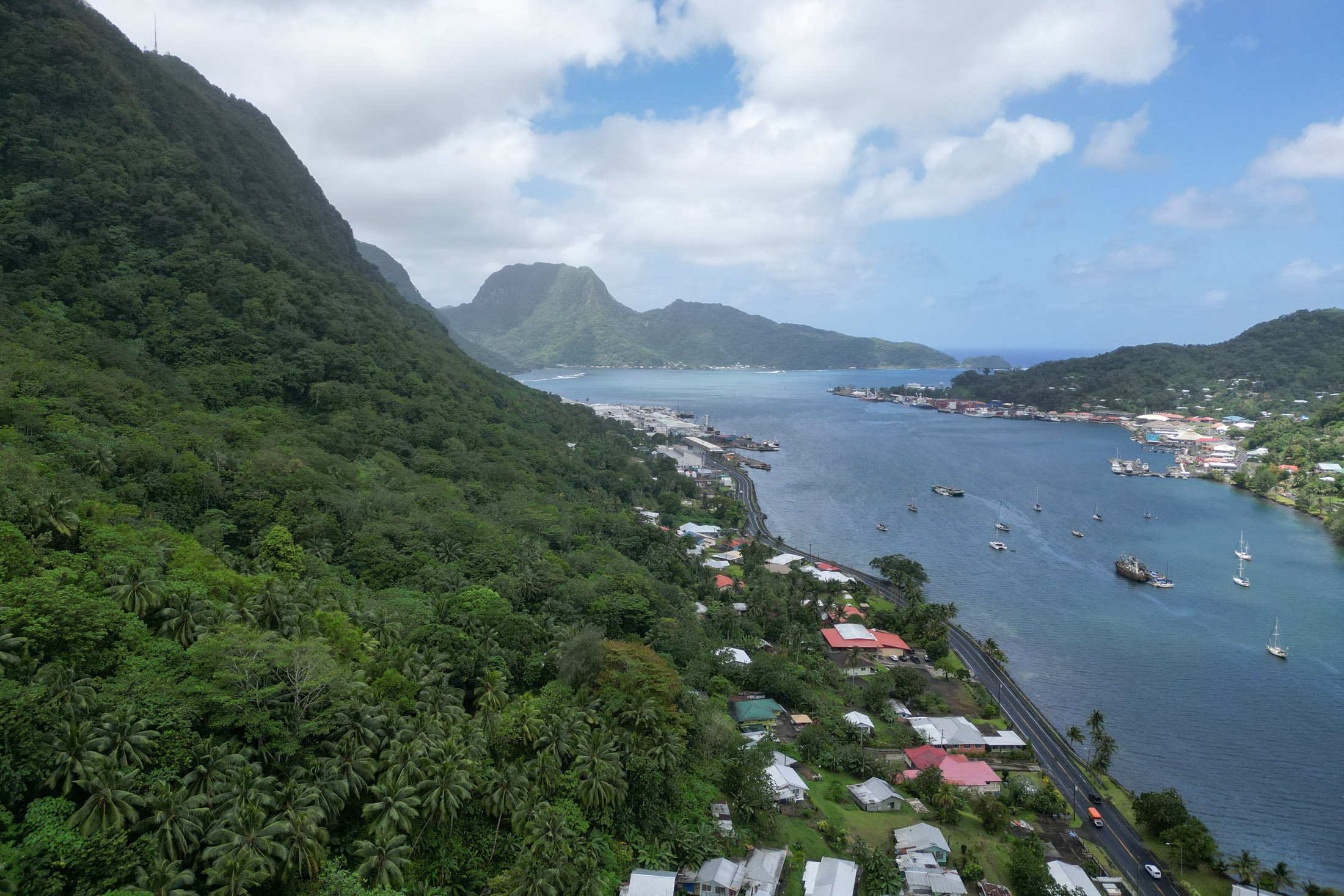
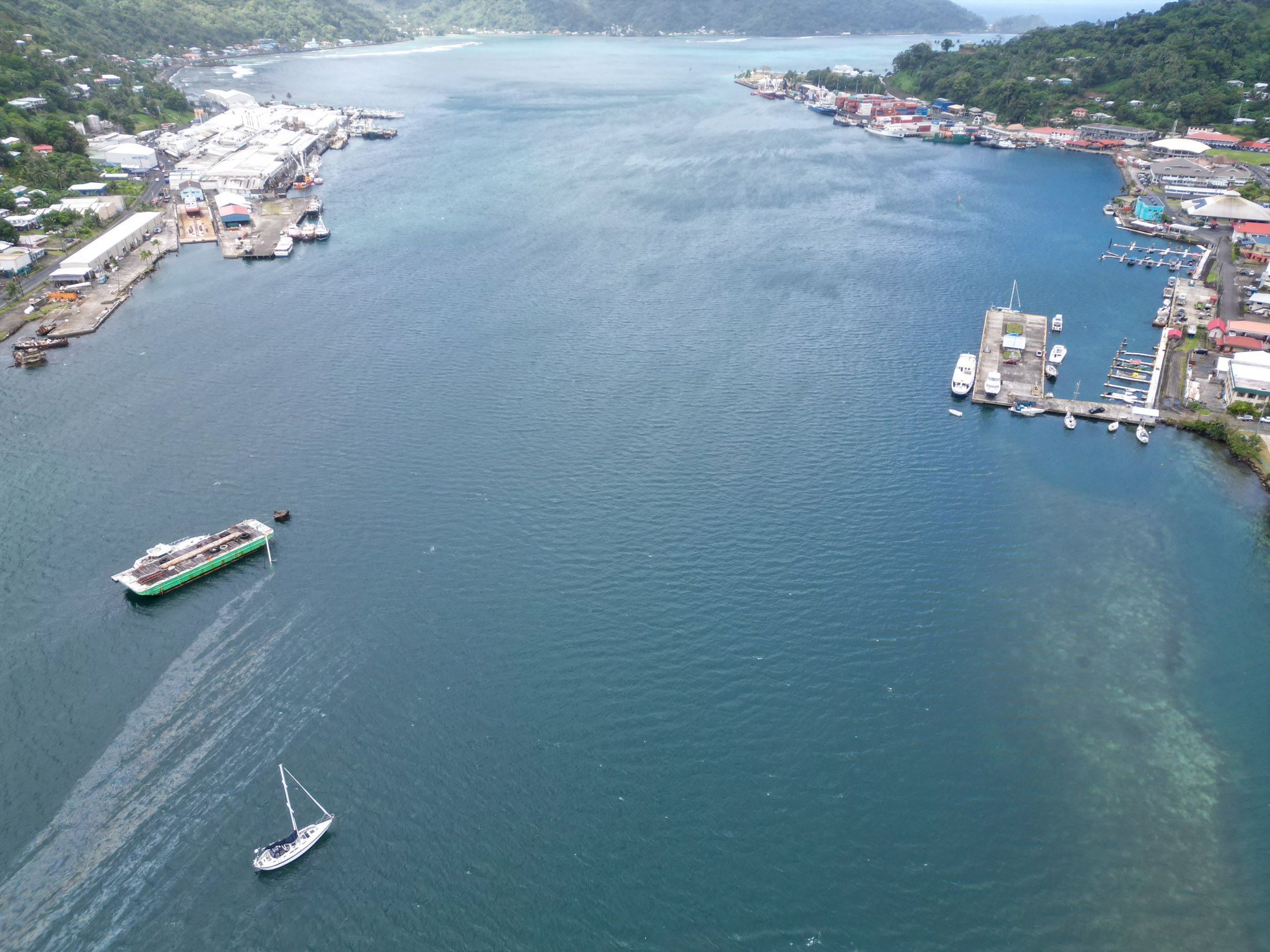
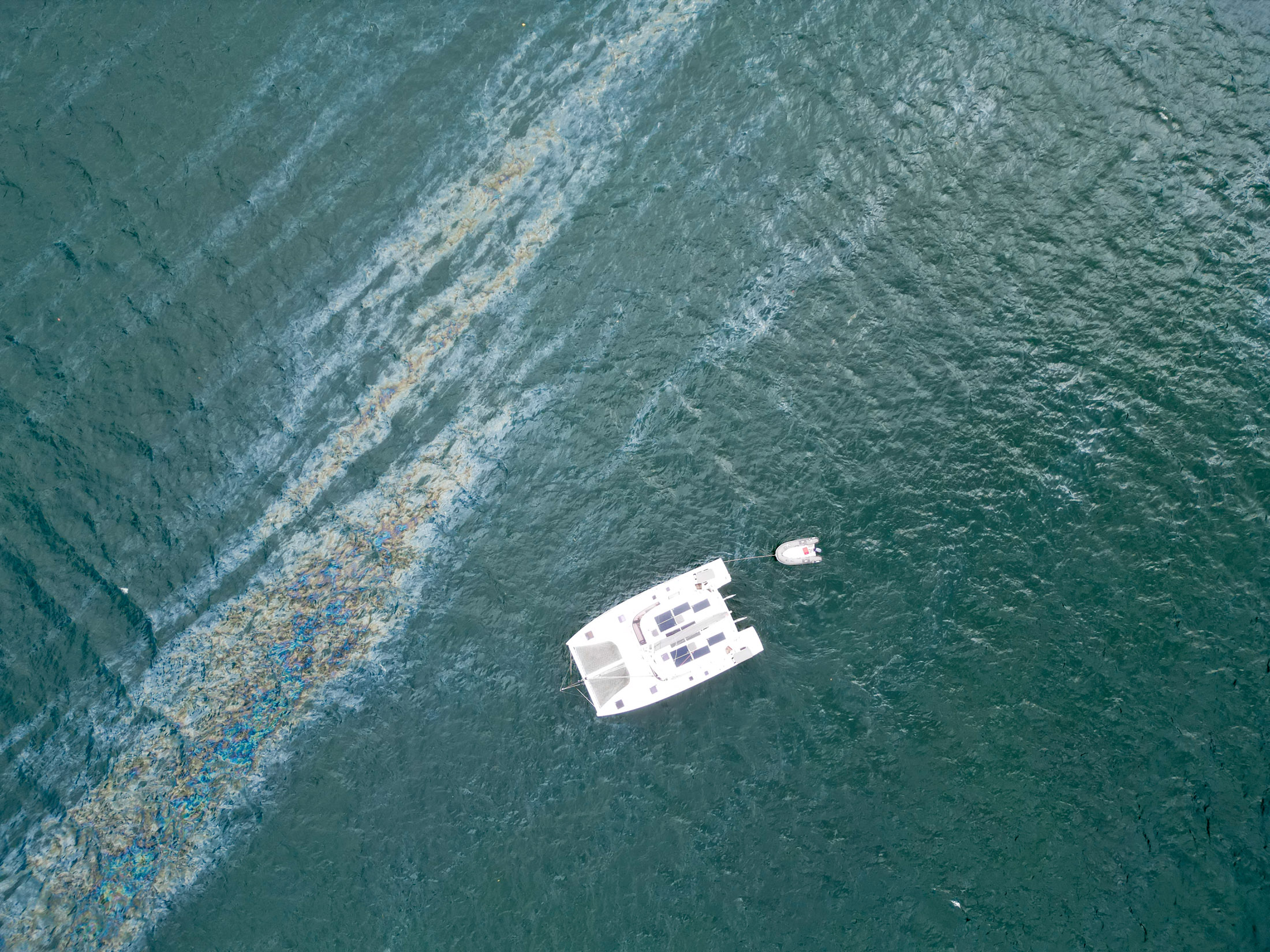
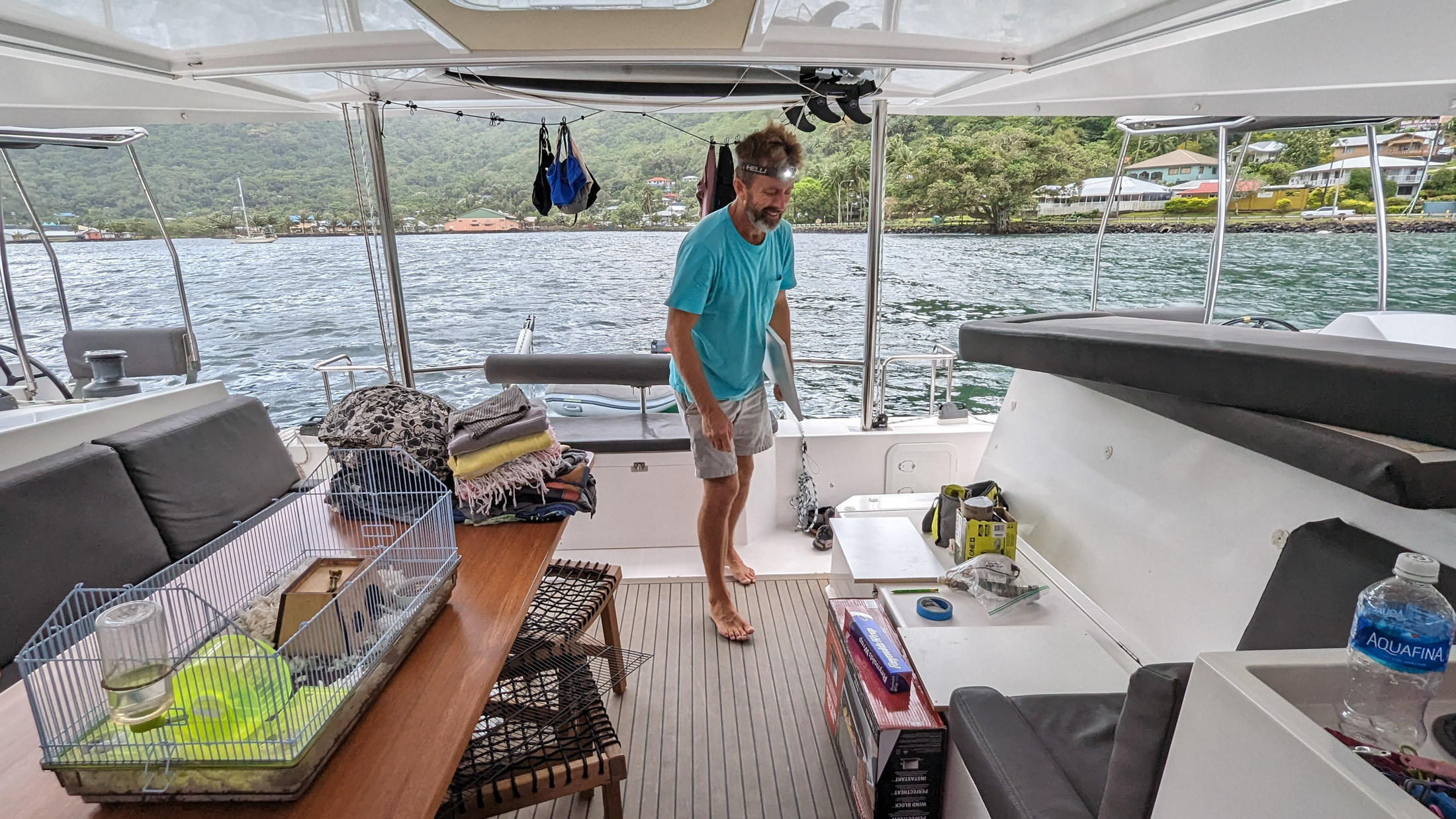
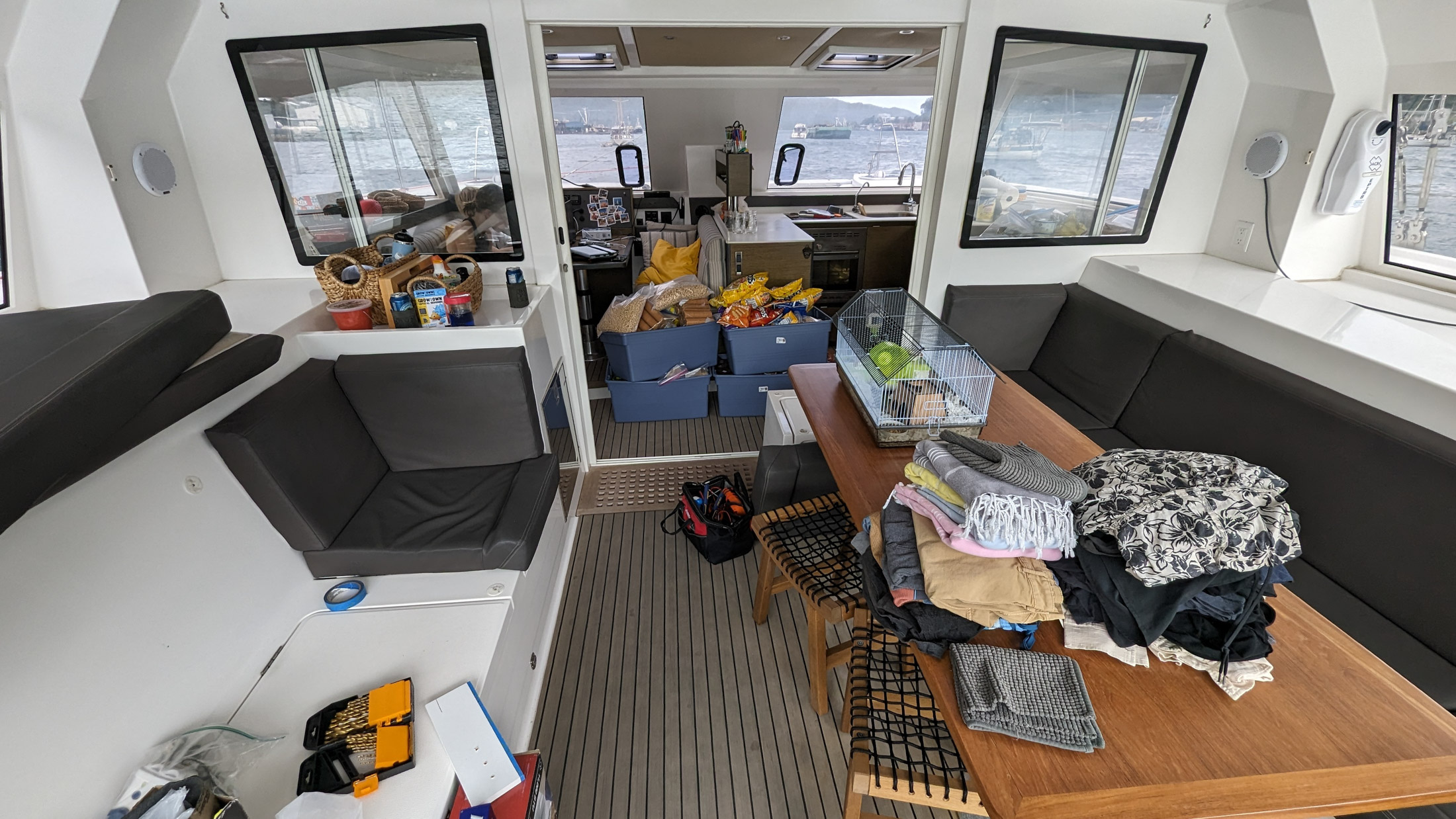
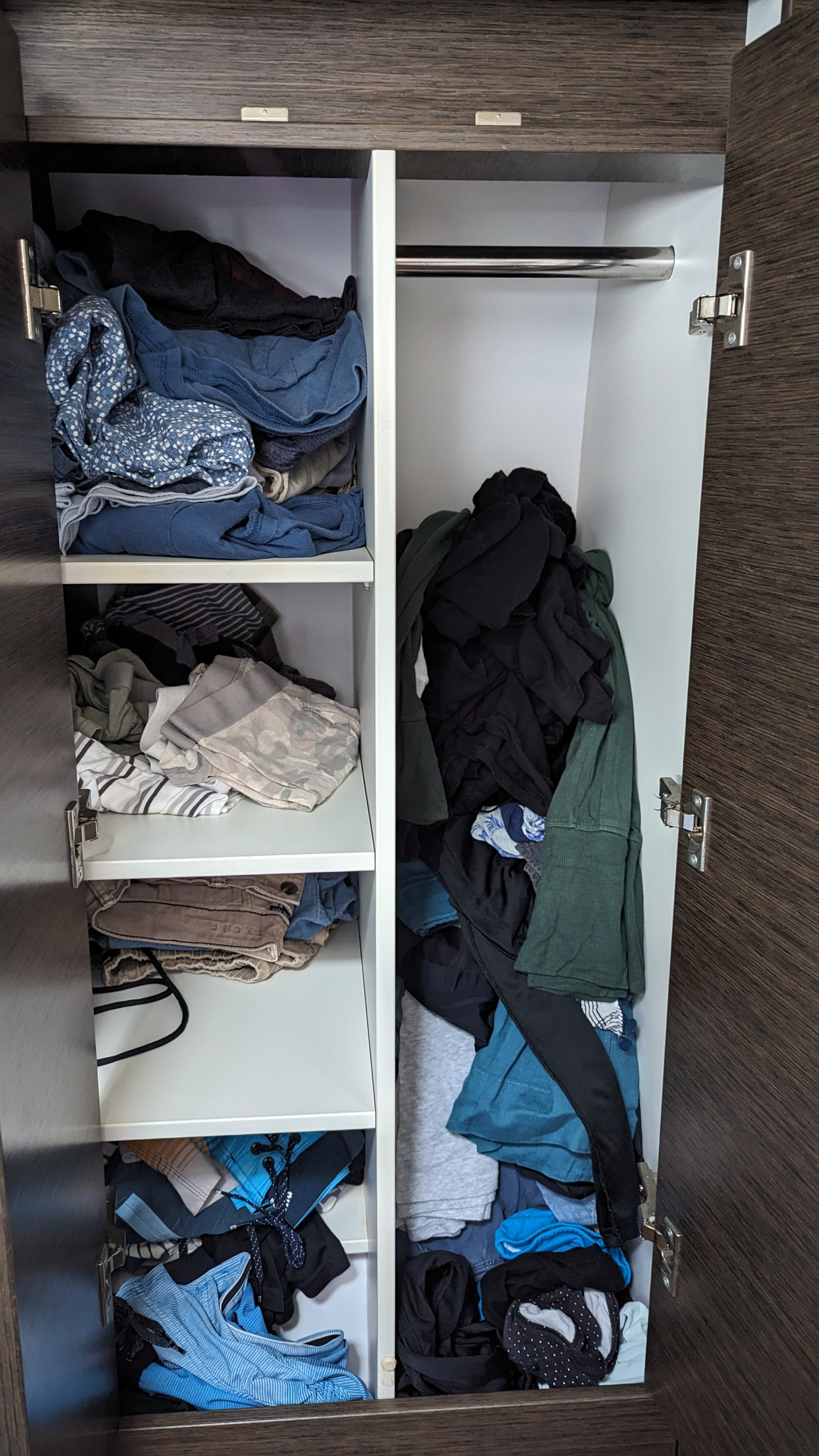
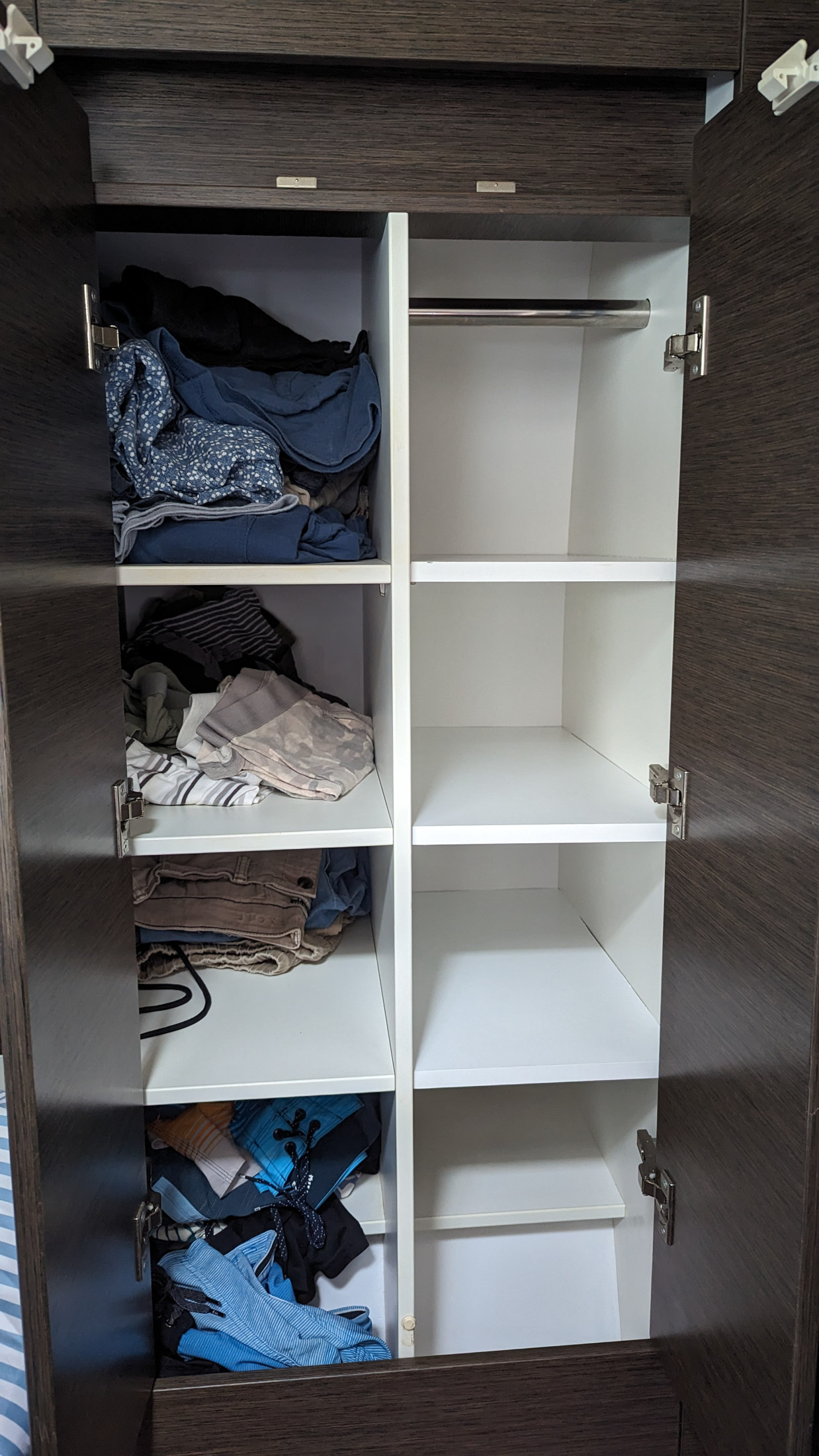
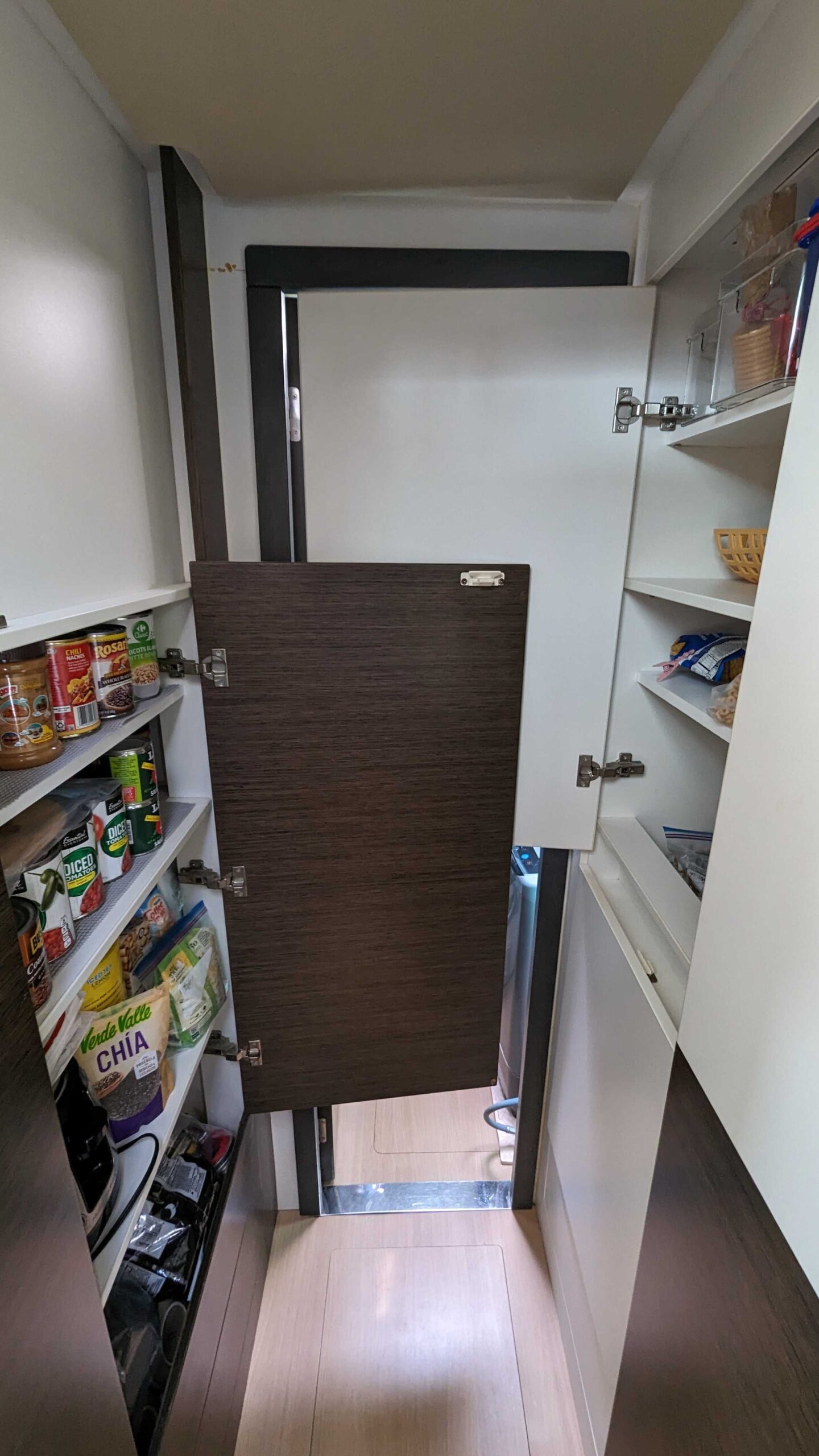
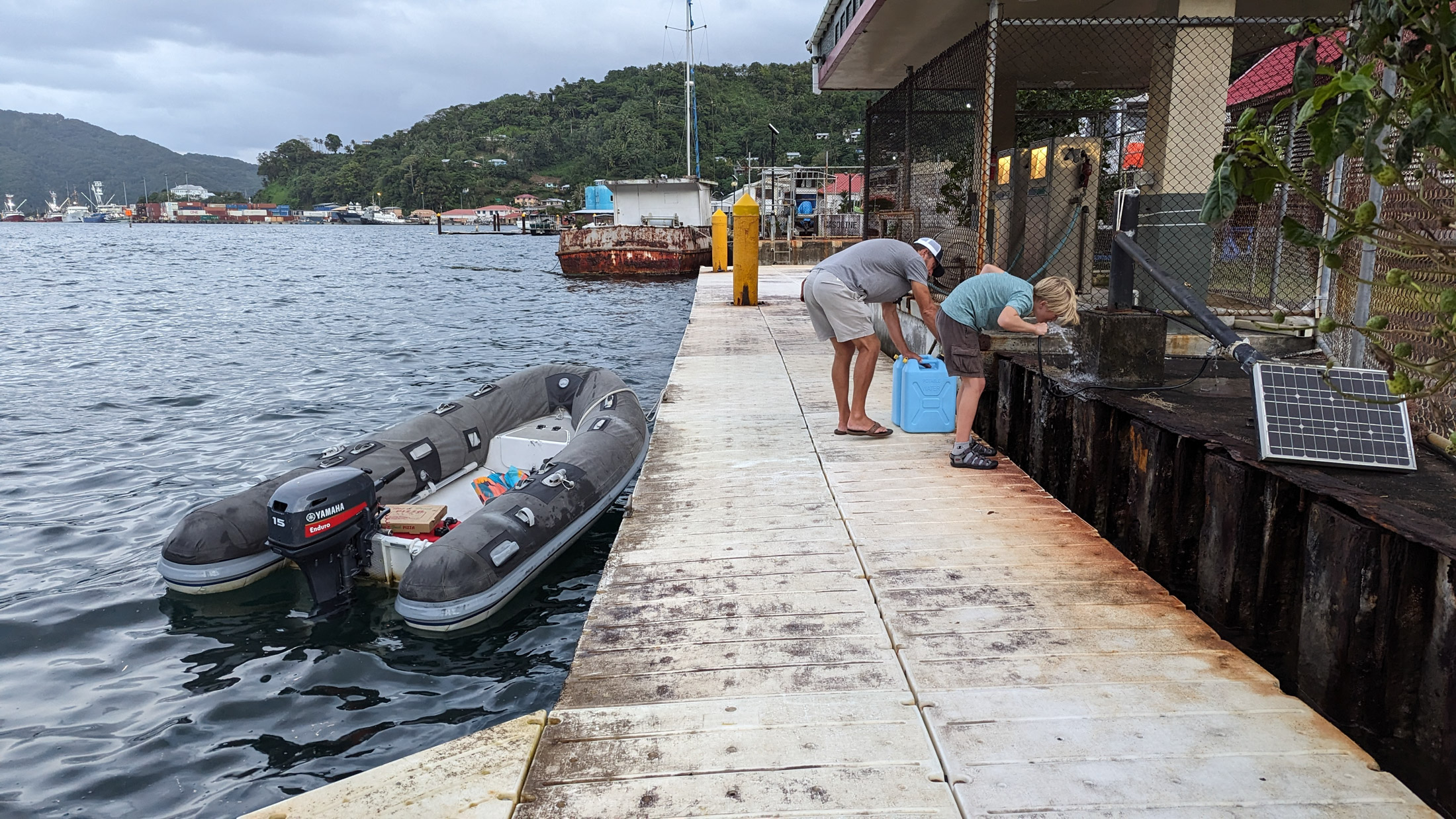
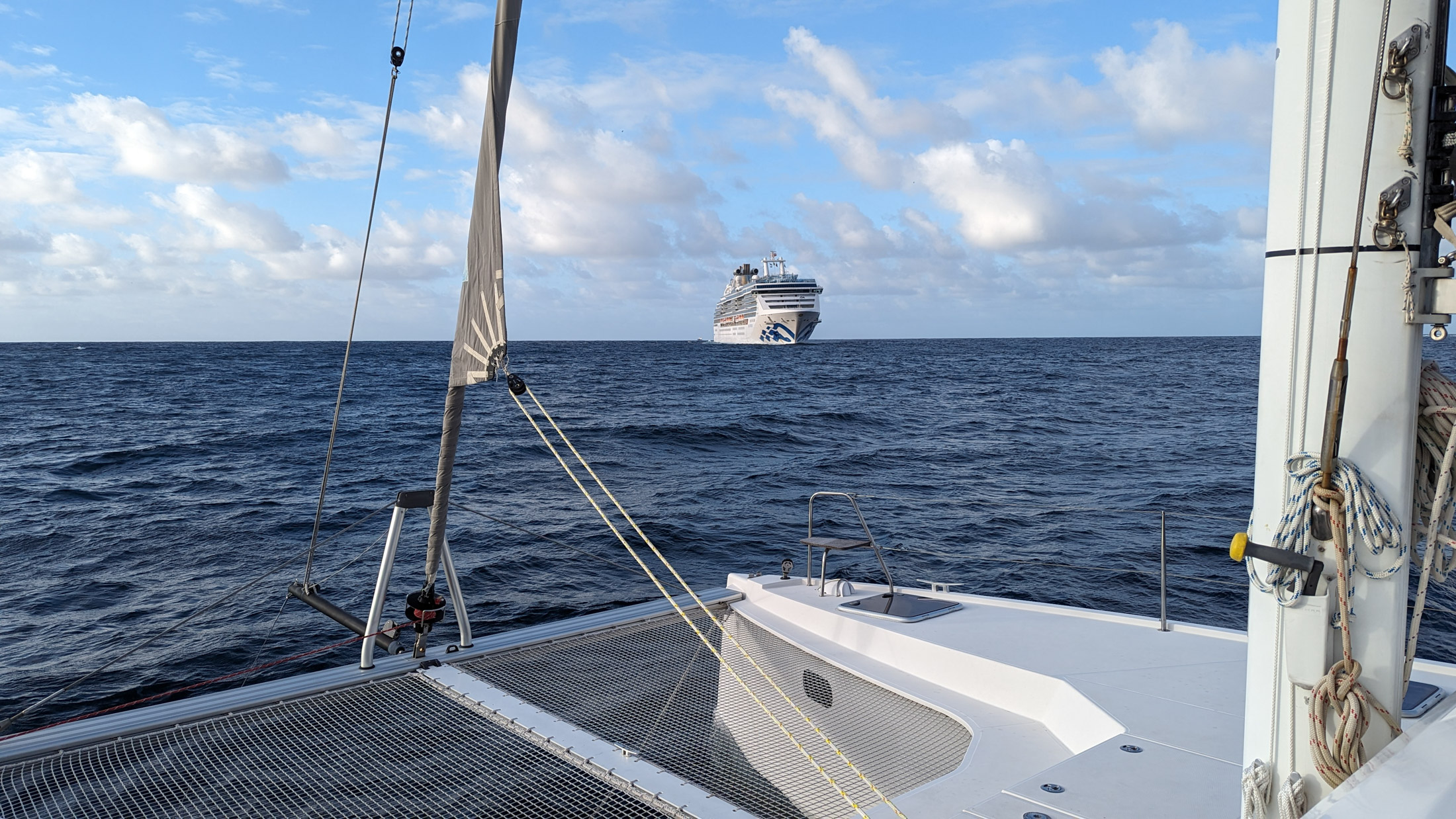
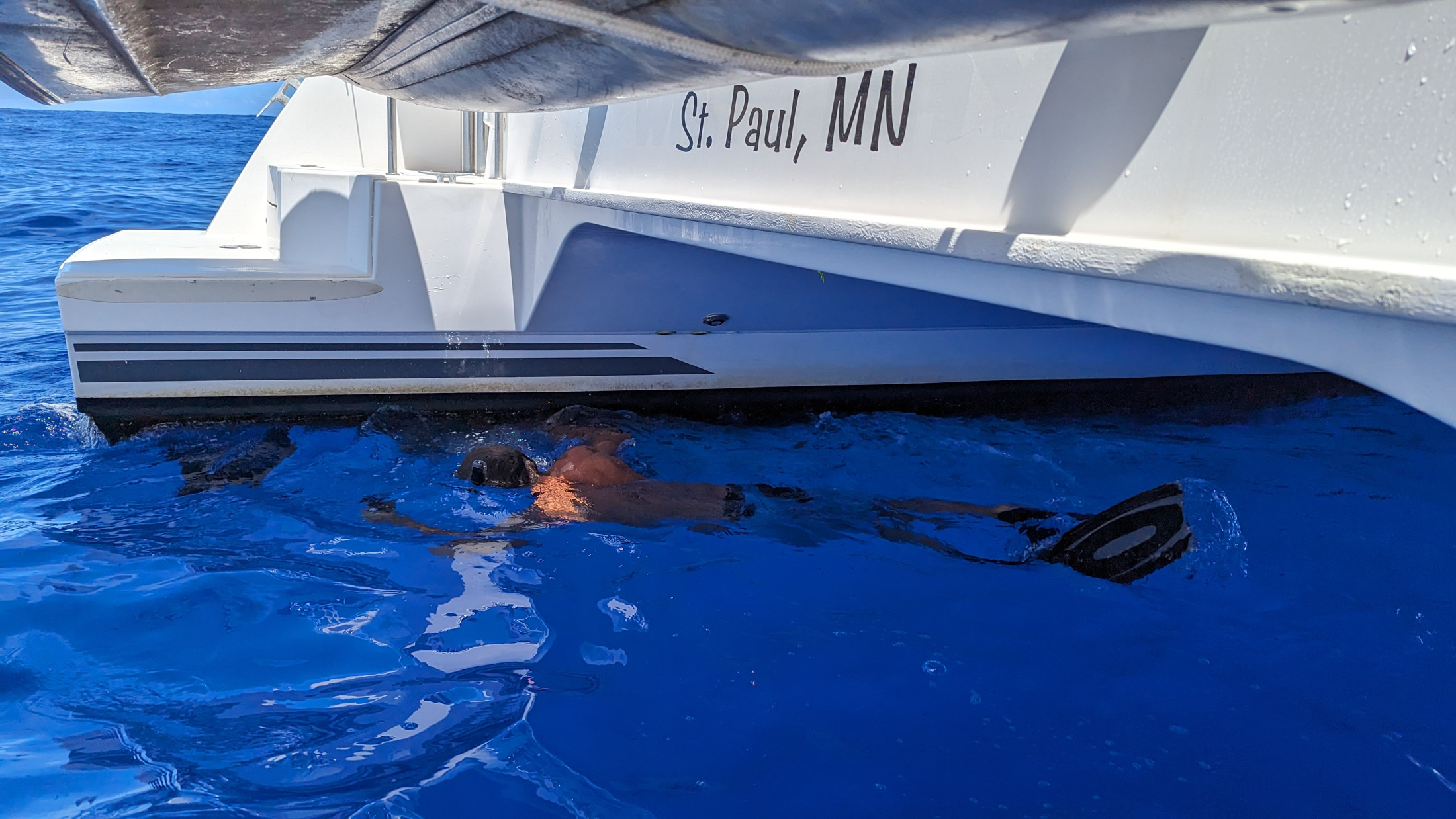
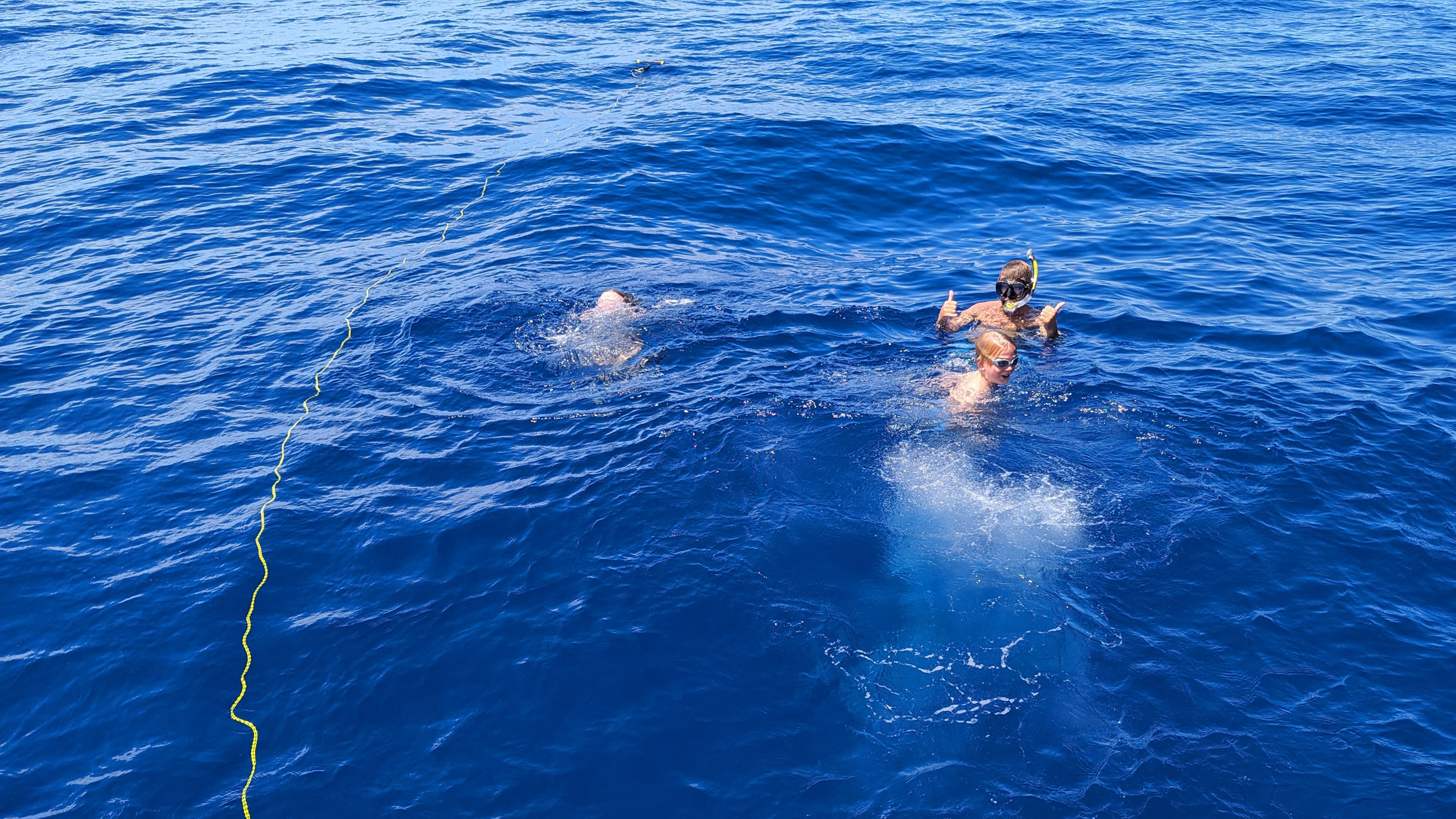
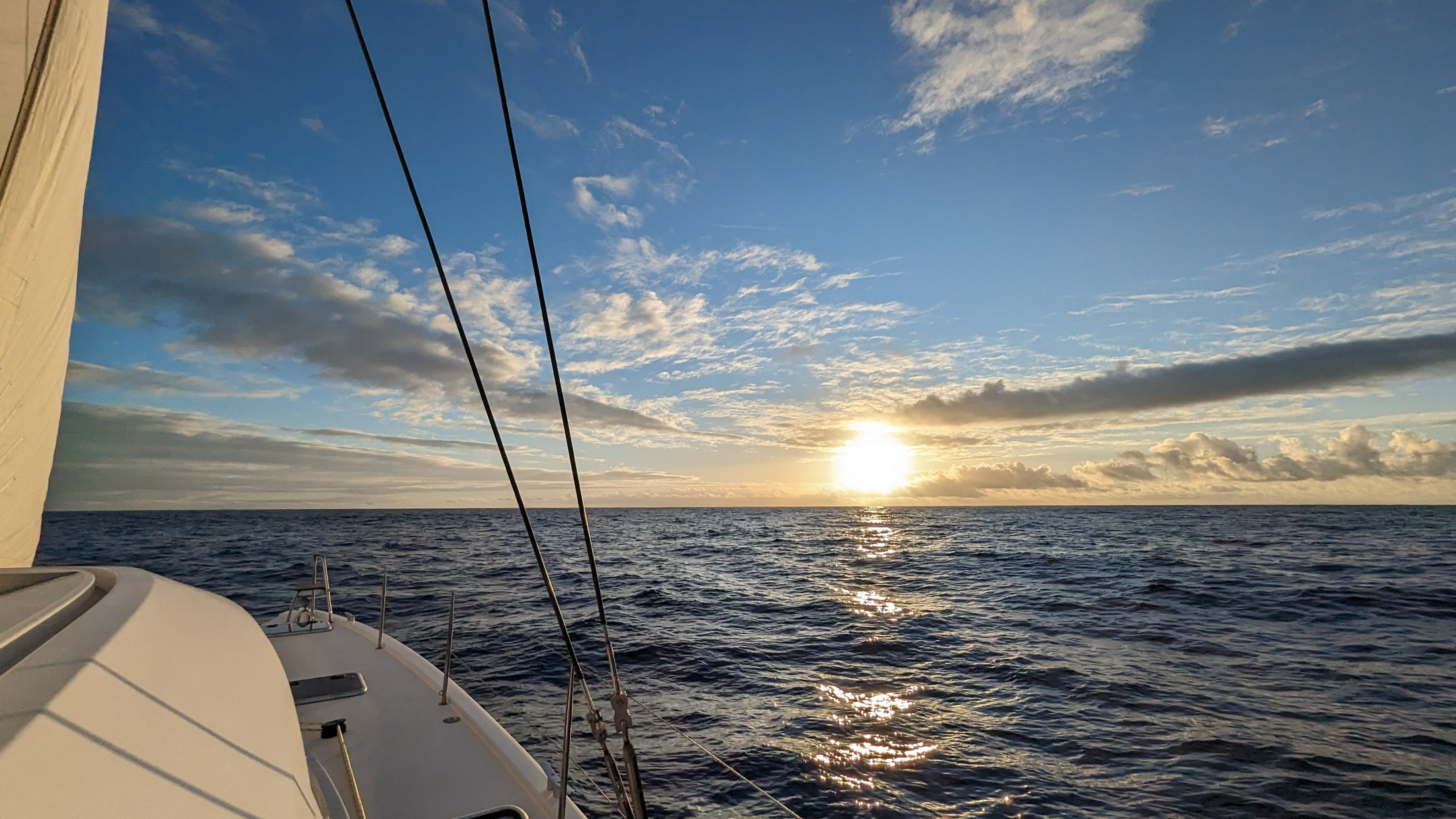
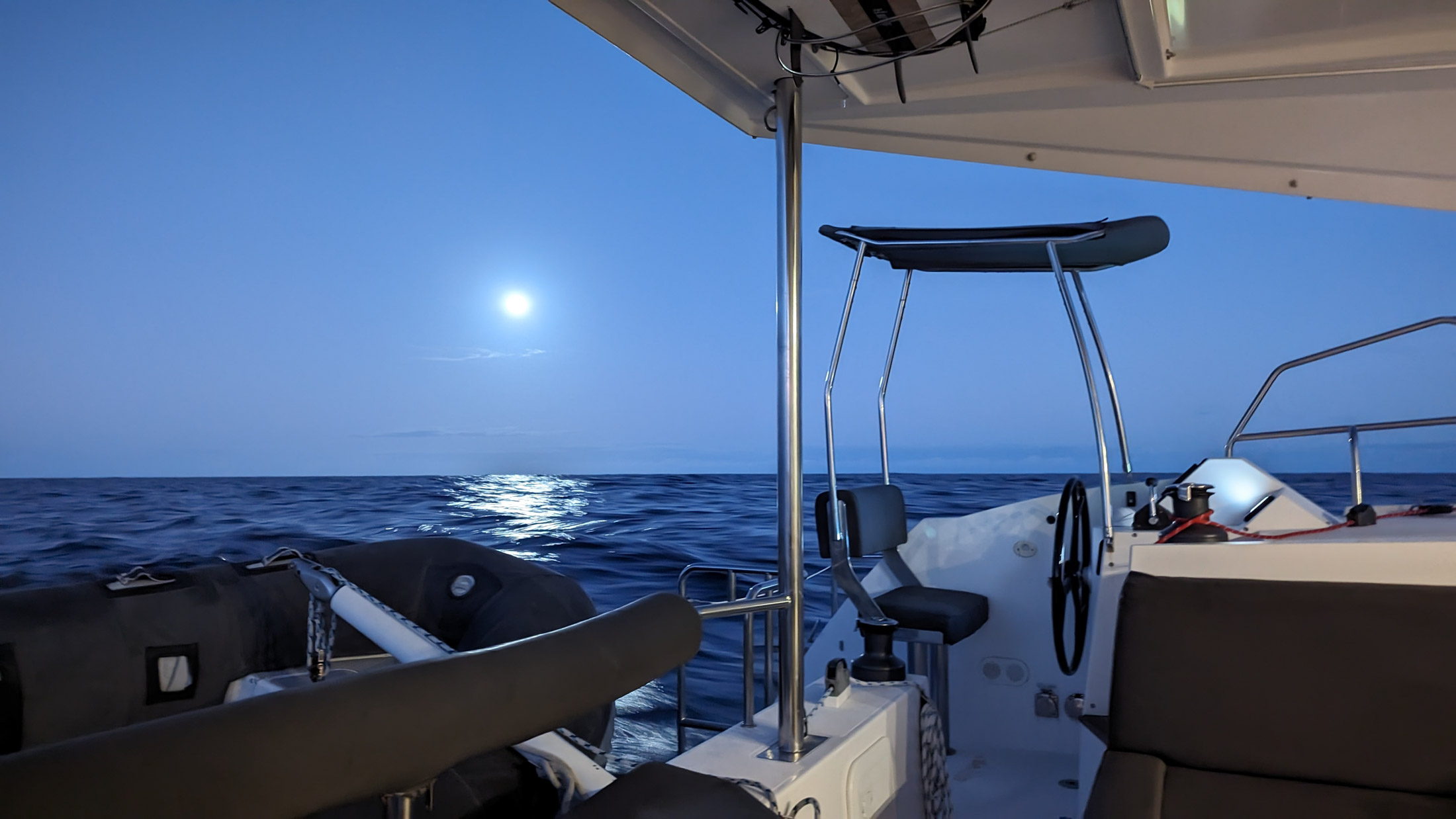
11 Comments on “American Samoa to Tonga”
I’m happy you all made it to Tonga, finally. I don’t know why, but I have a lot of interest for Tonga for some reason. Super jelly too. 🙂
Taco shells. Not only are they also rare here in St. Croix, but so far I haven’t eaten any that weren’t at least slightly stale. Not sure if that happens all over the tropical world or just here. Apparently, territories don’t have the same food rules and guidelines as states and that has me pondering a bit. Not sure why else my bag of lays has the expiration date scratched over with a Sharpie. Yep, stale. Of course I suppose it’s possible that the constant high humidity somehow permeates the impermeable layer surrounding the taco shell. (shakes head no)
Not sure the rank but the Puerto Rico trench here is not far behind the Tongan at 27,480-ft. Maybe you stopped there to scrape off some Haiti and DR barnacles and goo, too. 😉
In Re: Taco Shells
I’m in SW Arizona, Lucas, and Mexican food is a staple here. However, I’ve bought taco shells at the local Fry’s Foods (a part of the Kroger chain) and occasionally found them to be stale. My theory is that while most of the Mexican food locally is made fresh, including the taco shells, the packaged shells available in a supermarket can’t be consumed nearly as quickly after they’re made. As a result, they sit on the shelf too long and it’s the oil they’re fried in that permeates the tortilla and becomes rancid.
When it happens, I return the rest of the box to the store for a credit or just swap for a replacement box with an acceptable Best By date.
haha. Returning taco shells to the store because they are a little stale works in America, but if you try that in the islands you’ll be laughed right back out the door. All you can do out here is leave them in the oven an extra couple of minutes trying to crisp them up enough that you can ignore the staleness.
Thanks for the comment. We love Arizona.
I’m pretty sure if they can get away with scratching out expiration dates, they can also get away with selling stale tacos. Even if you could take them back, there most likely won’t be anything on the shelf to replace it (like for like) because they are so rare and stale. If all that is offered is stale then every replacement will be stale.
Seriously, you can’t get what you want on this island a lot of the time. Examples. Go to Pizza Hut and order thin crust double pepperoni and you might get a thick crust regular pepperoni. Good luck trying to make it right. It happens all over the island all the time. ….ordering something and getting something different. Little Caesars can’t make an Extra Most Bestest Pepperoni that takes 12 minutes because they close in an hour. Order chicken from the Chicken shack that says it comes with salad and seasoned rice or white rice and get johnny cake instead of salad and white instead of seasoned rice because it’s all they had left but they didn’t tell you. Hope you aren’t allergic to any of the replacements. And last but not least, when you want fresh vegatables at the grocery store but most of what they have is wilted or rotting. …and yes, it’s for sale. 😉
Being a day ahead of the US ought to help the trading.
I’m hoping you have better experiences as your travels continue.
American Samoa, armpit of the Pacific….
What is “opportunity cost of money”? I totally agree with you on buying a boat that you can afford to lose.
Let’s say in 2004 boat insurance would have cost me 3% of the value of the boat. That’s $4,500 for the year. If I invested that $4,500 in the S&P instead, I’d have ~$18,000 today. The opportunity cost of choosing to spend $4,500 was giving up having $18,000 today. To my mind, it’s even worse than that, because I think boat insurance is grossly overpriced. Insurance companies price it to cover their losses from boats that are sitting in East Coast marinas getting wiped out every year by hurricanes. If they pooled actual full-time liveaboards into their own insurance pool the losses would be a fraction of those hurricane losses. At least that’s my way of thinking through the choice of “to insure or not insure.” An insurance actuary might dispute my numbers with hard stats, though.
Marinas and even countries, require insurance now, and usually includes wreck removal. Hopefully you can find a policy that will satisfy the minimum requirements, which I believe is not easy.
I’m not in the market.
The international dateline recently put my head in a spin.
We were in Indonesia for several months which is 15 hours in the future compared to our home time in Baja (LA time). So the USA daily news (and trading) cycle is inverted. Most of our day it was yesterday back home and 6am USA was at 9pm for us there (which is pretty much bedtime these days). We of course acclimated but then for the first leg of our return we flew east for 6 hours to Sydney and after arrival I realized we were then 17 hours to the future of LA even though we’d been flying east closer to home. What the heck? A check on google revealed that New Zealand would be 19 hours ahead! My head was hurting by then but I finally realized that crossing the dateline west to east flips the date back one day and we were then 5 hours behind and back in a world that made intuitive sense to me.
I am enjoying your trip vicariously but between the crowds of boats and the garbage and the prices, the lack of decent food and the bureaucratic hassles I find myself disenchanted and with little desire to visit the S. Pacific! Which is strangely consoling. But don’t let Instagram know, it’s all rose colored glasses over there.
I’m sure things will soon turn up for you down the road. And when you complete your circumnavigation you’ll be back in Mexico where there are no bad days!